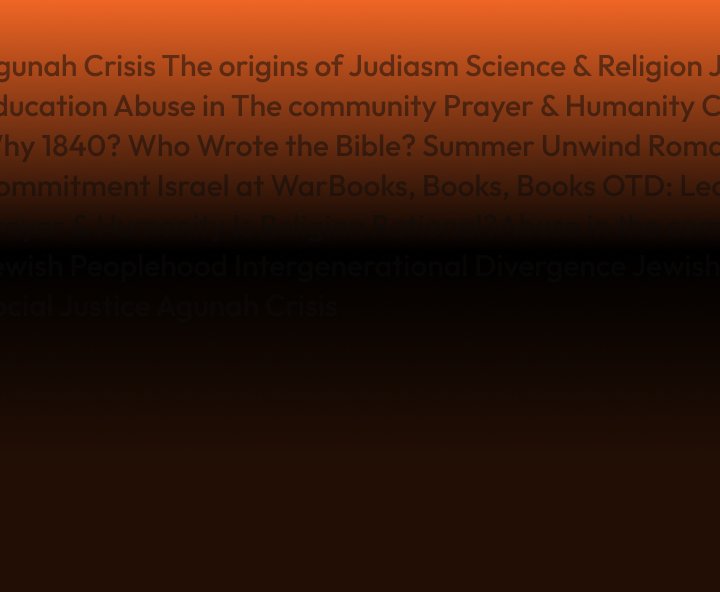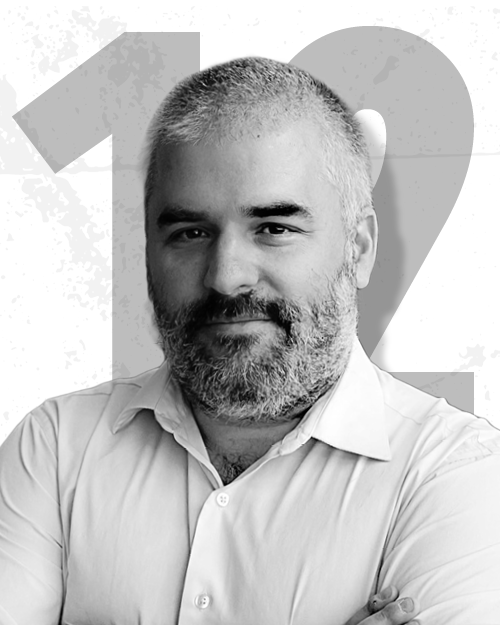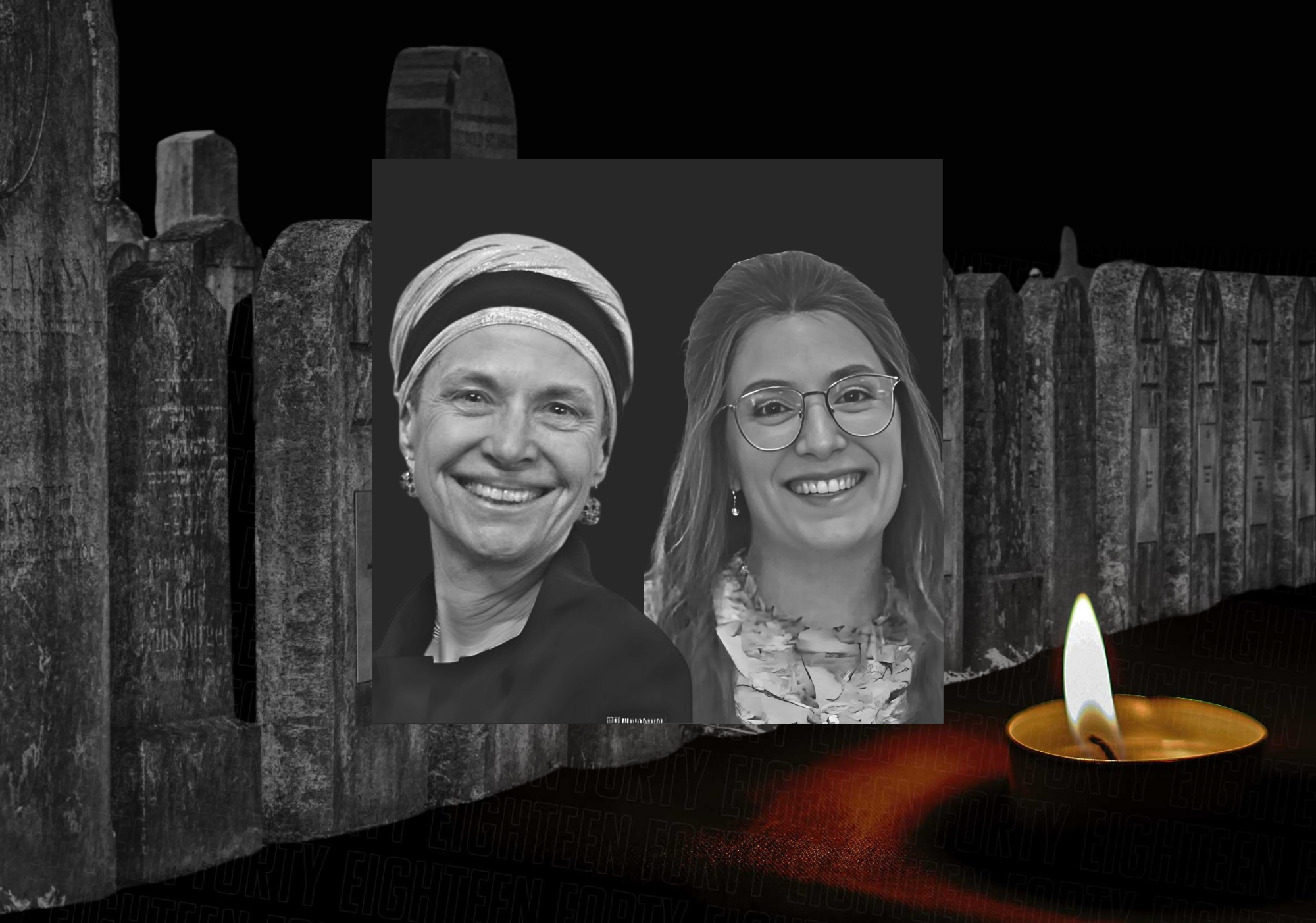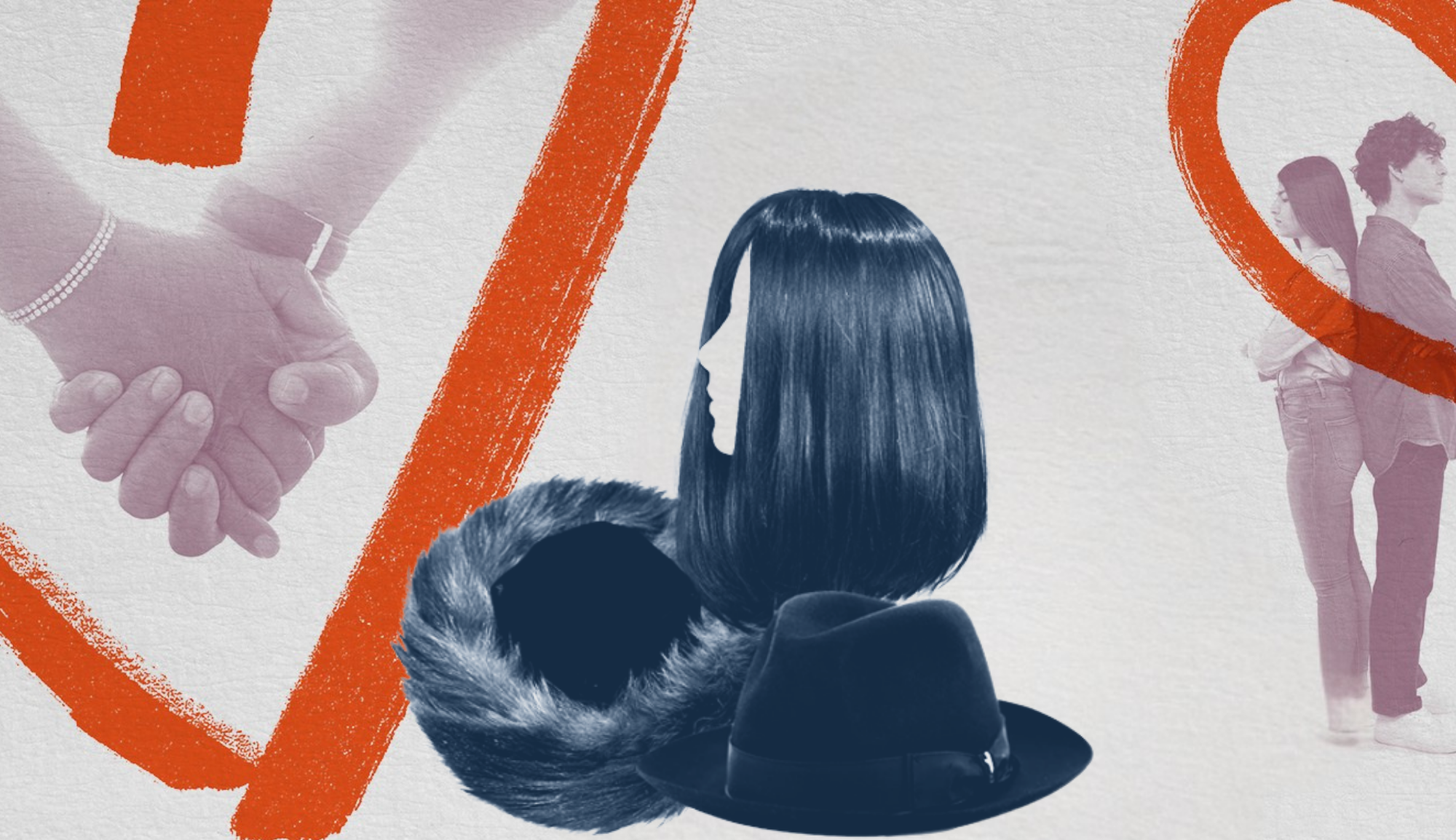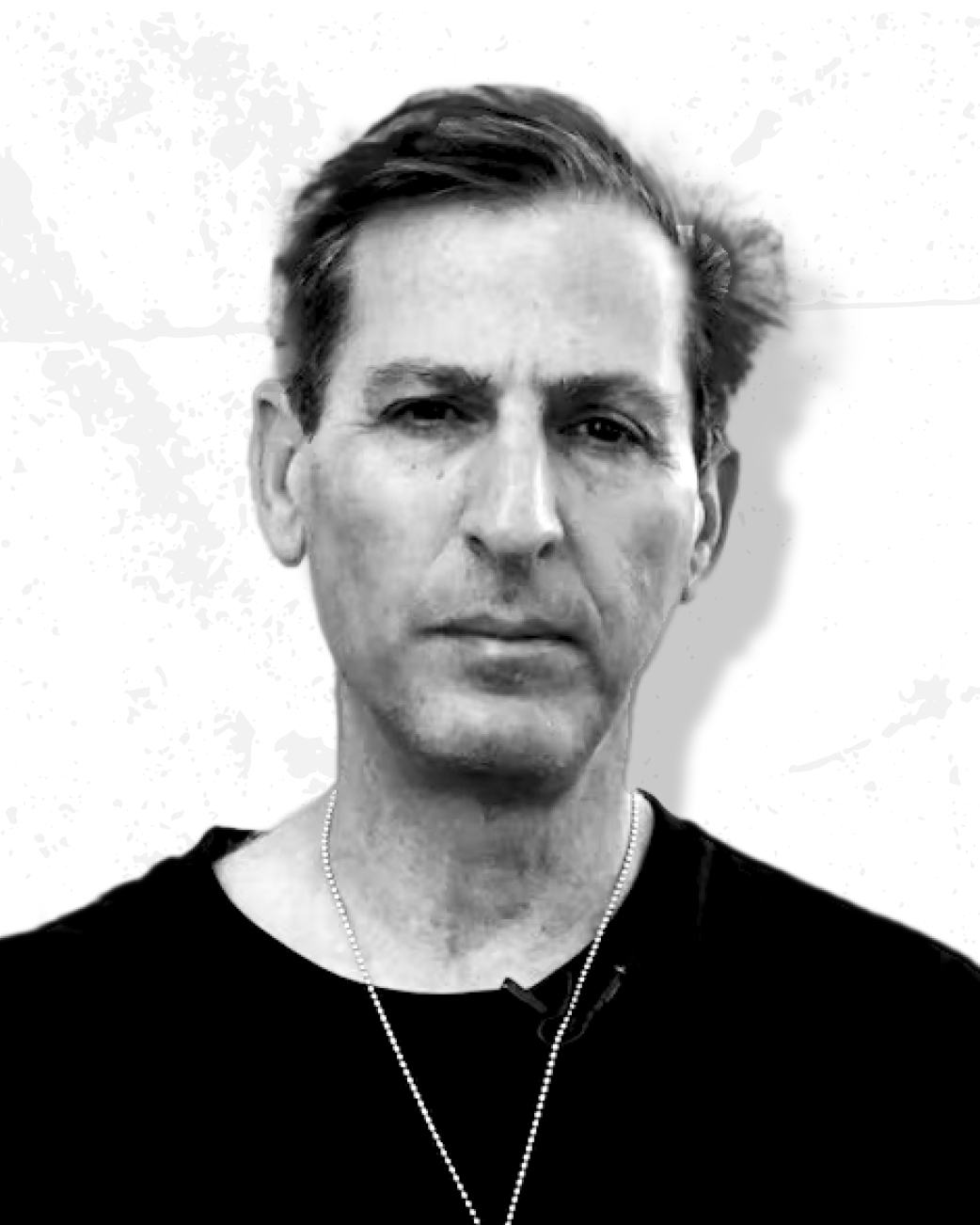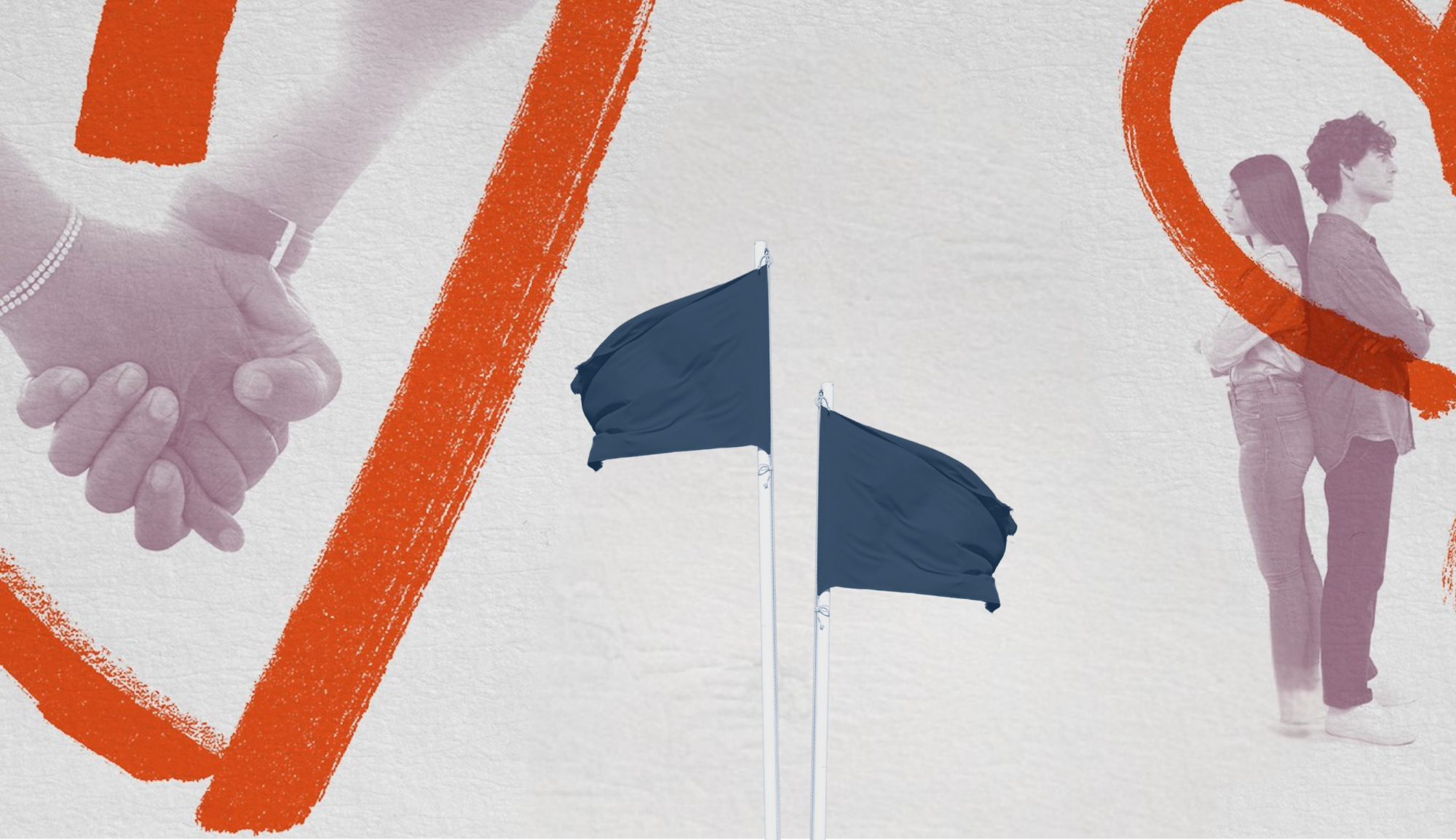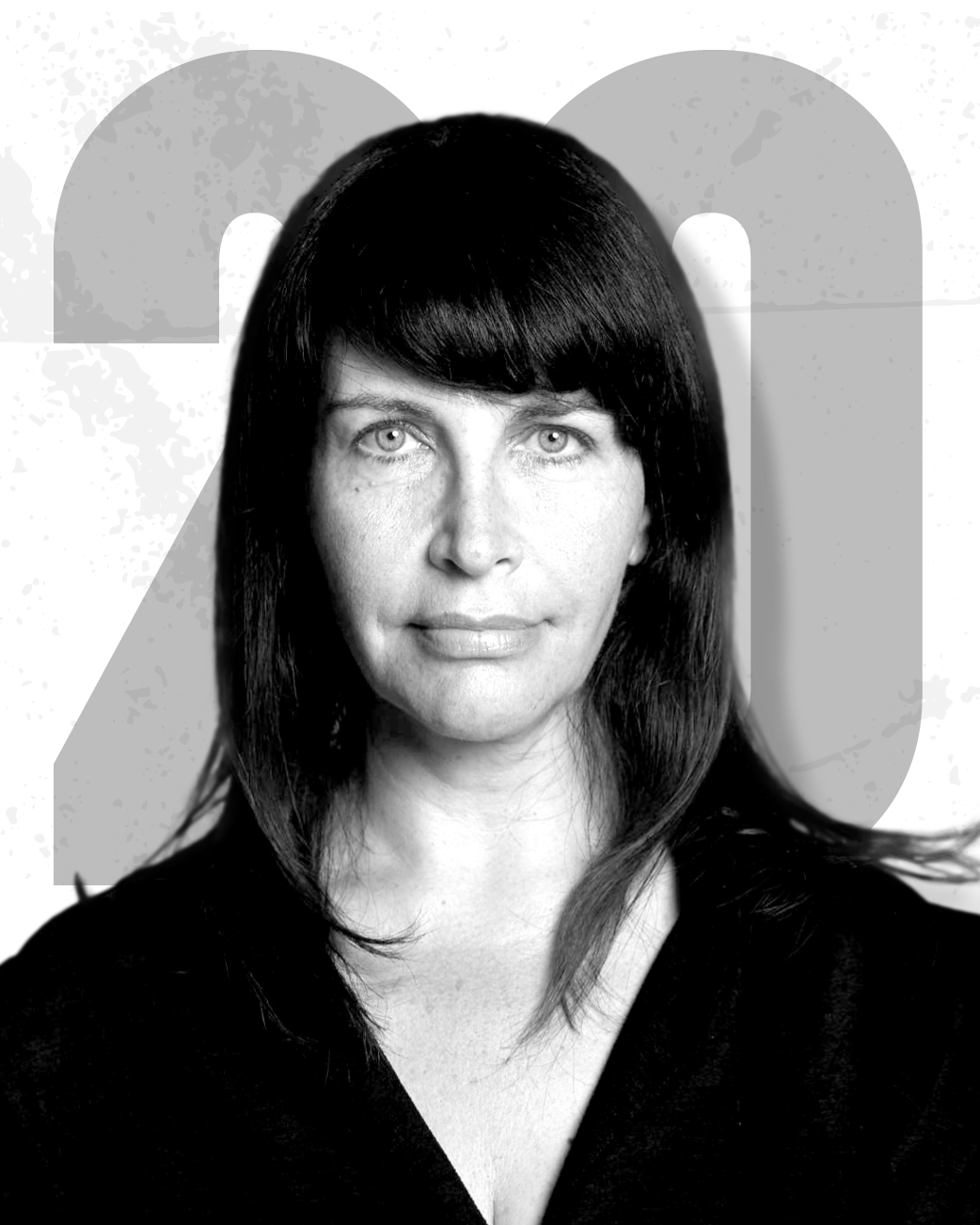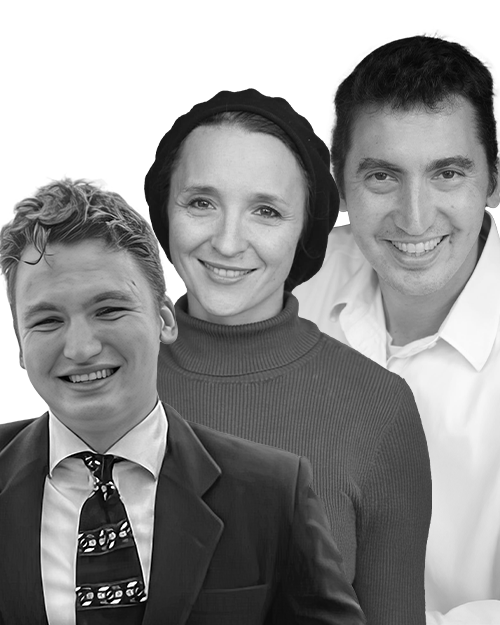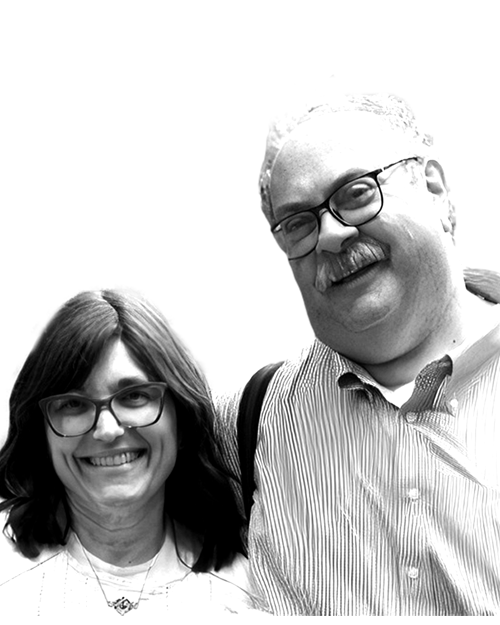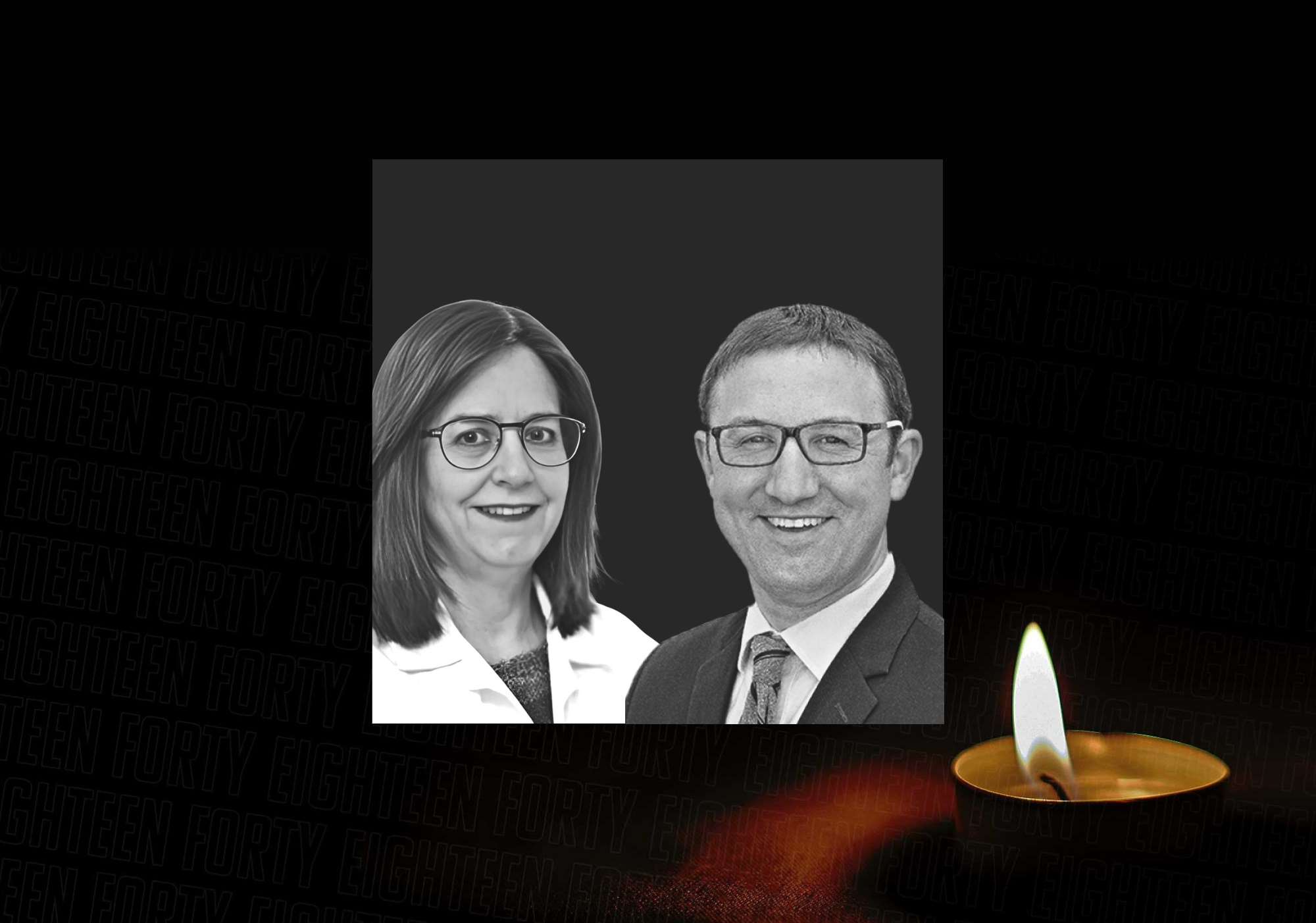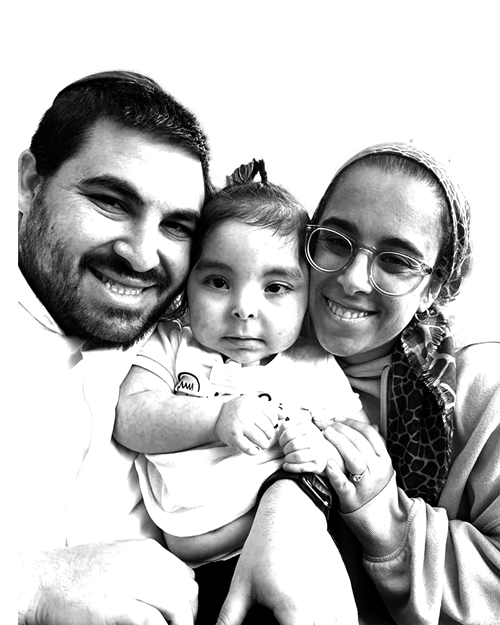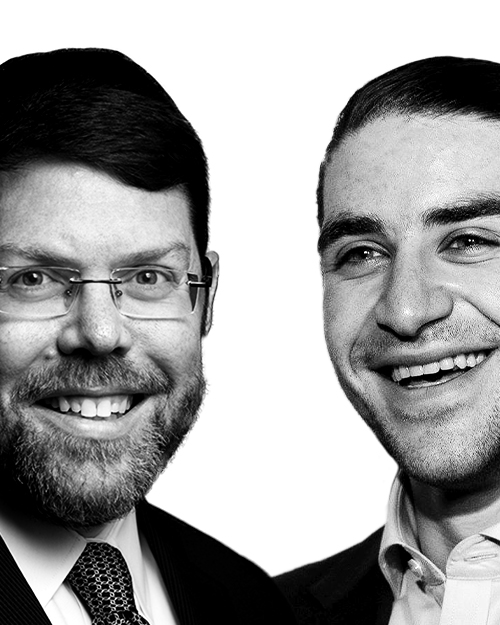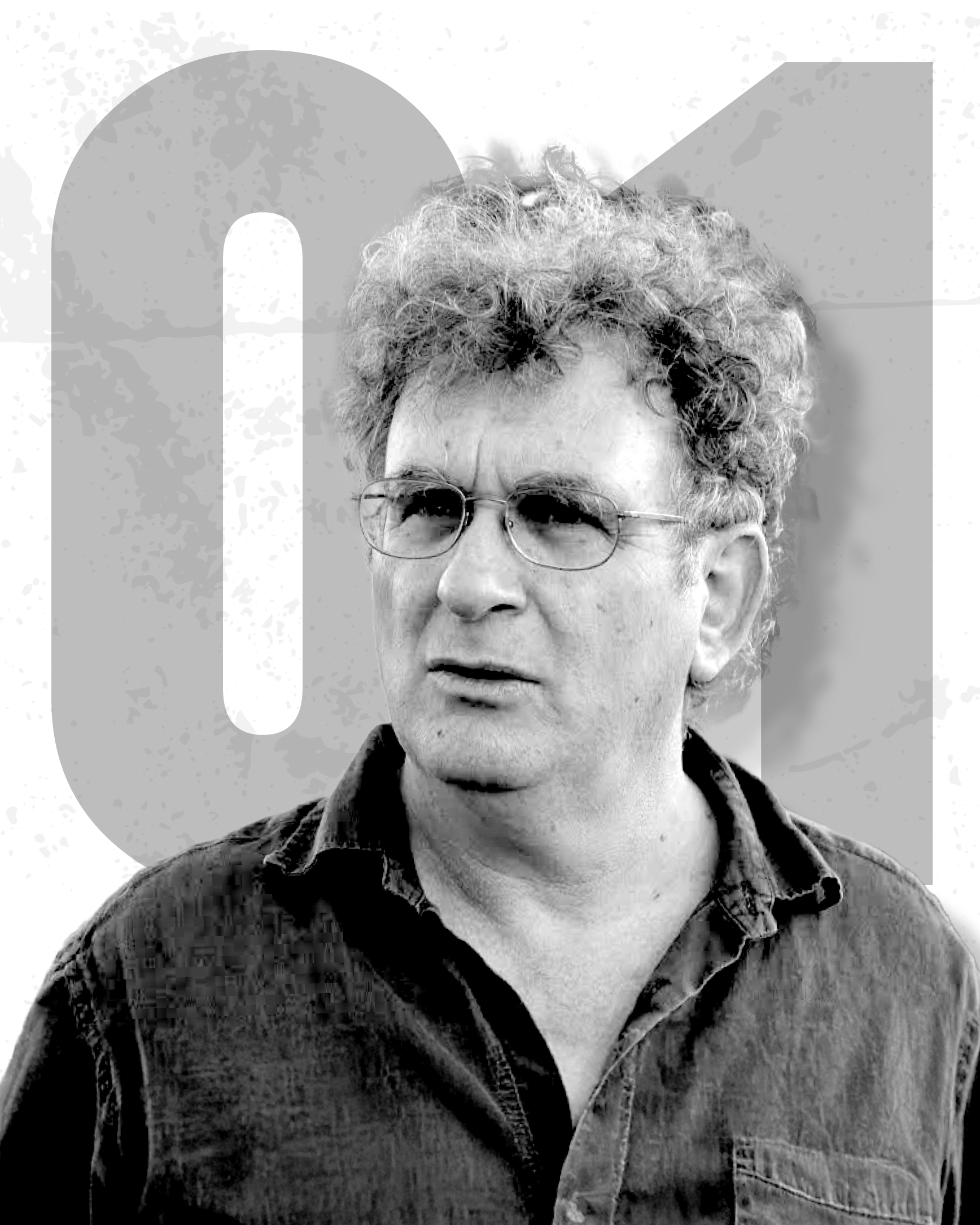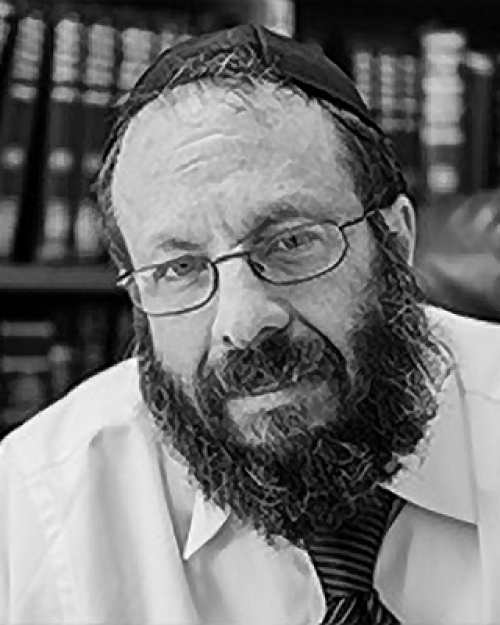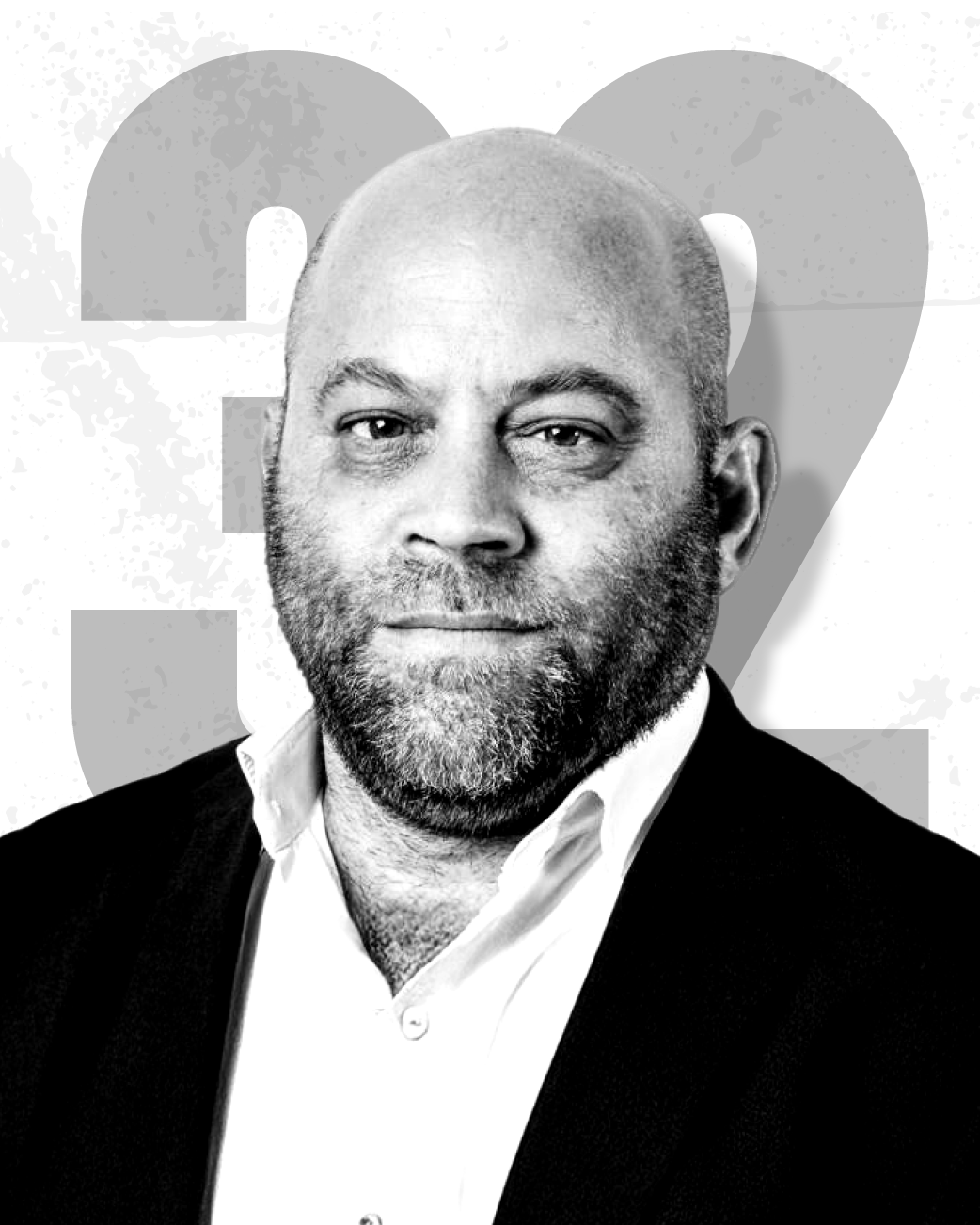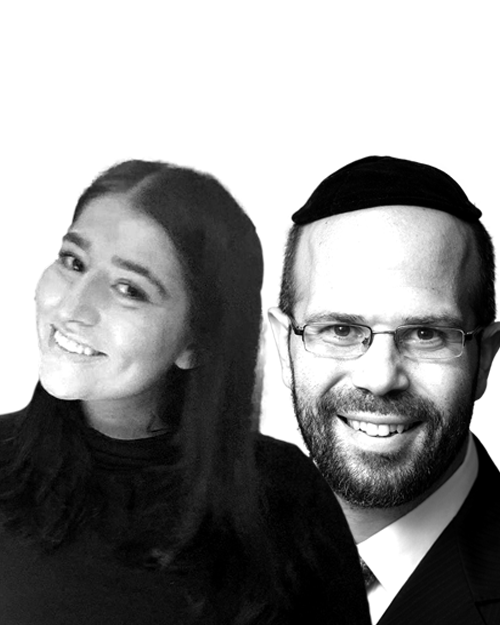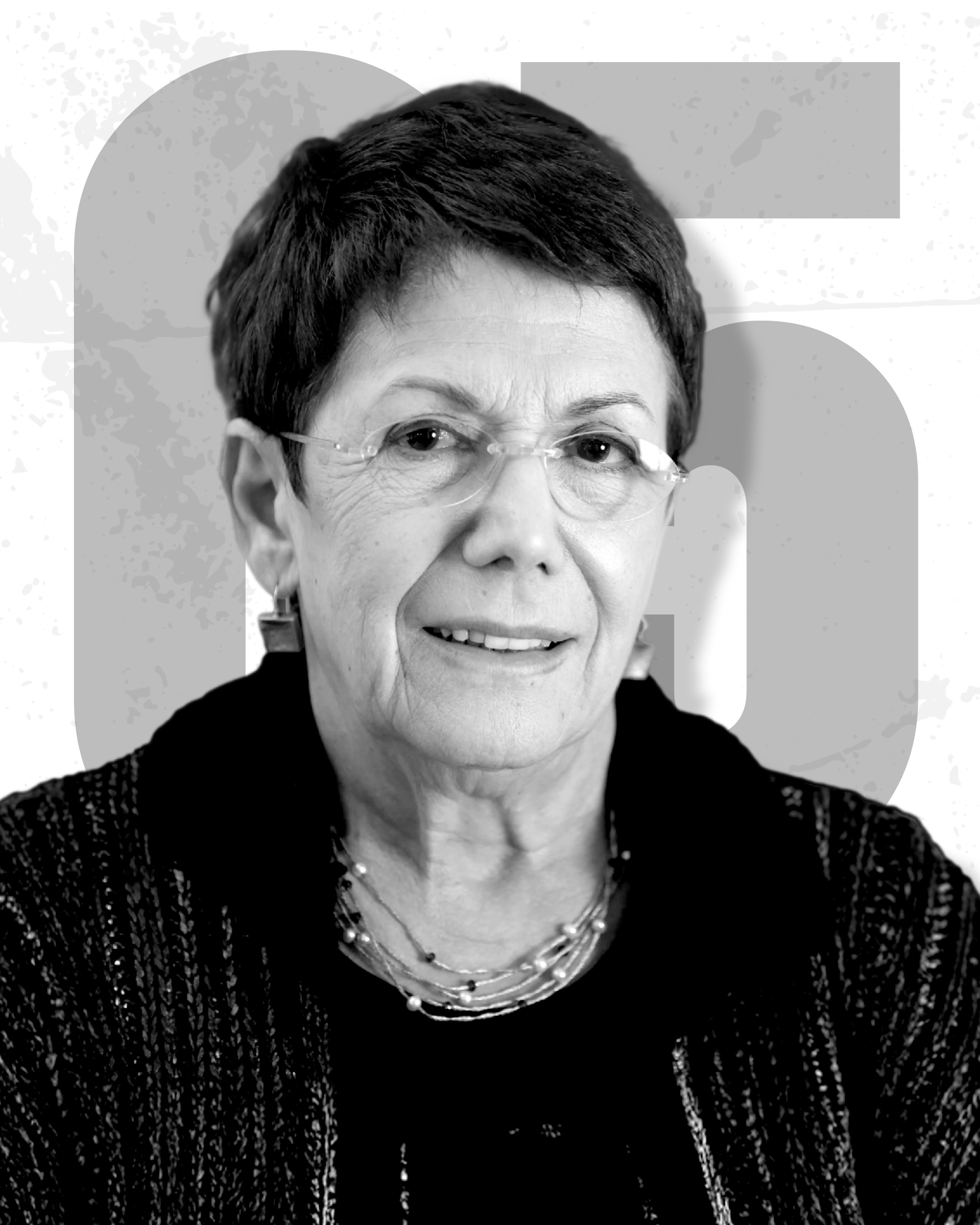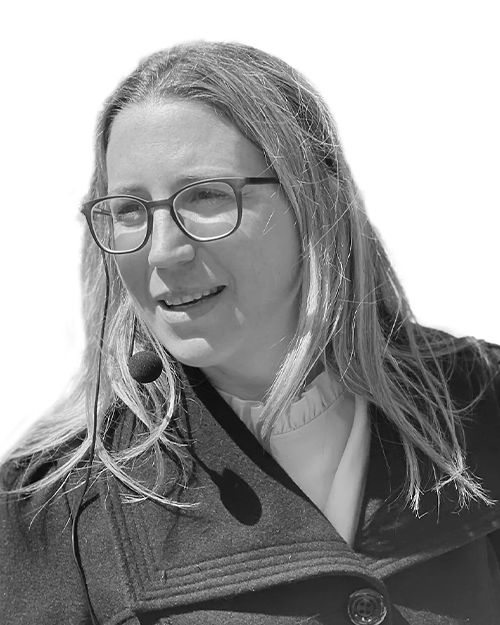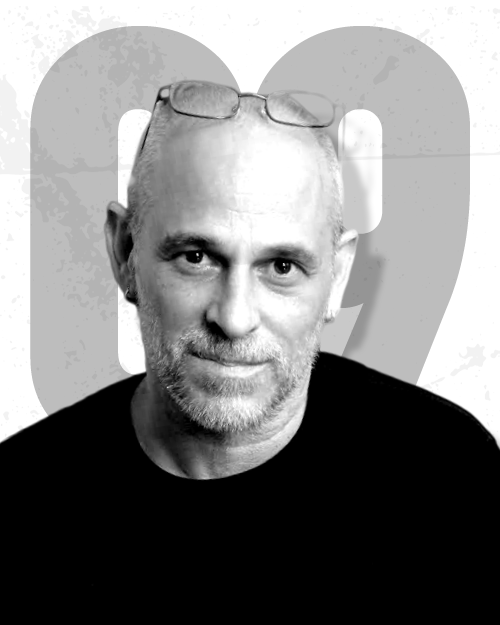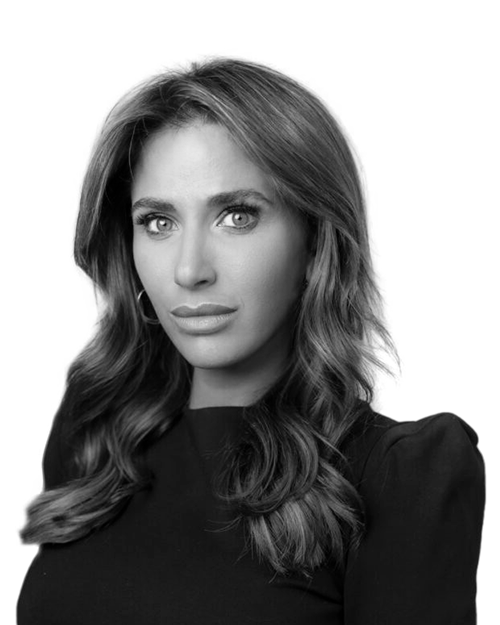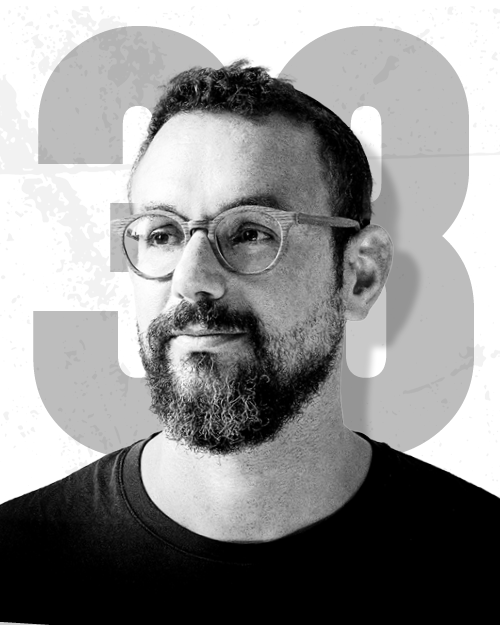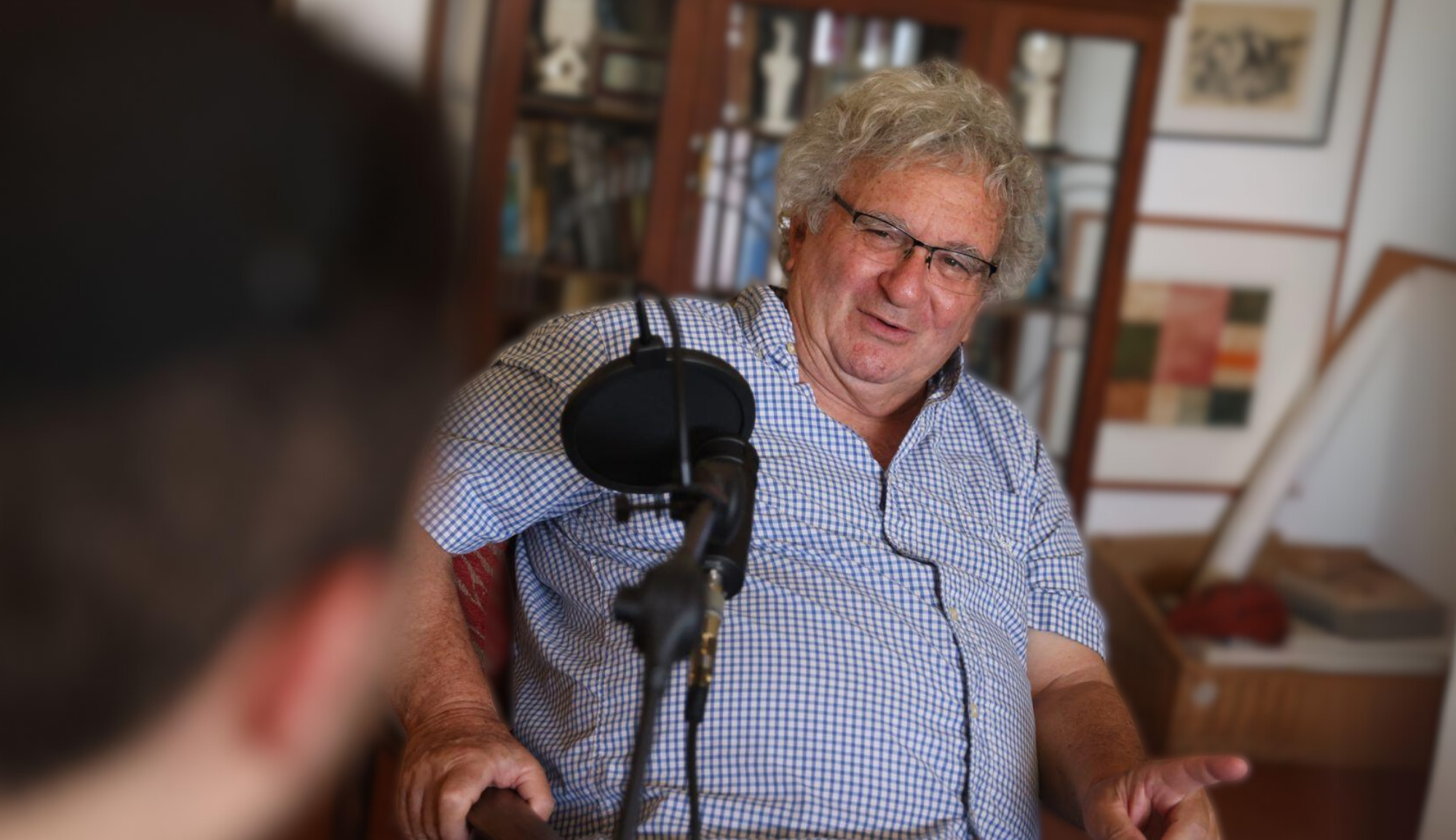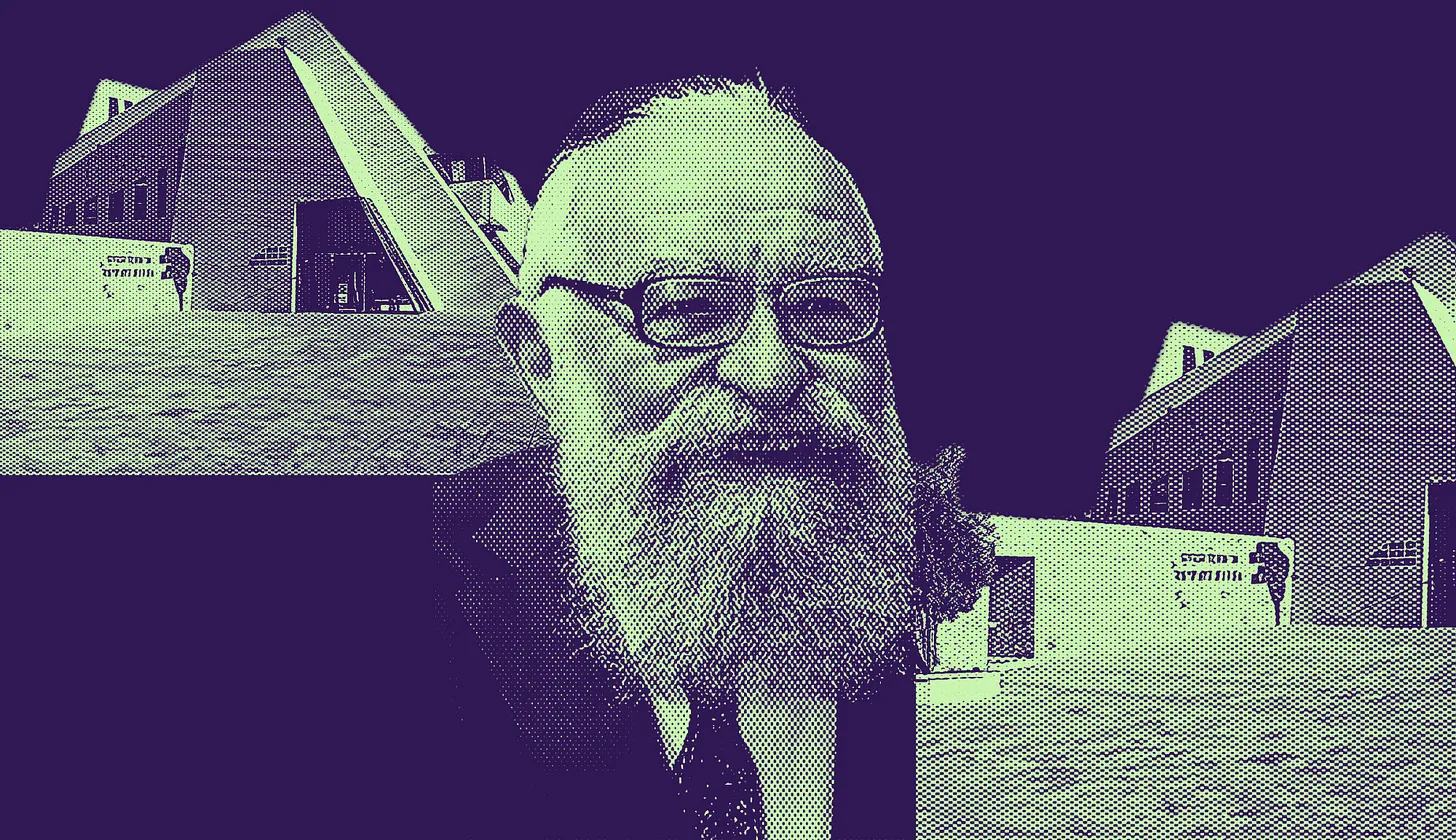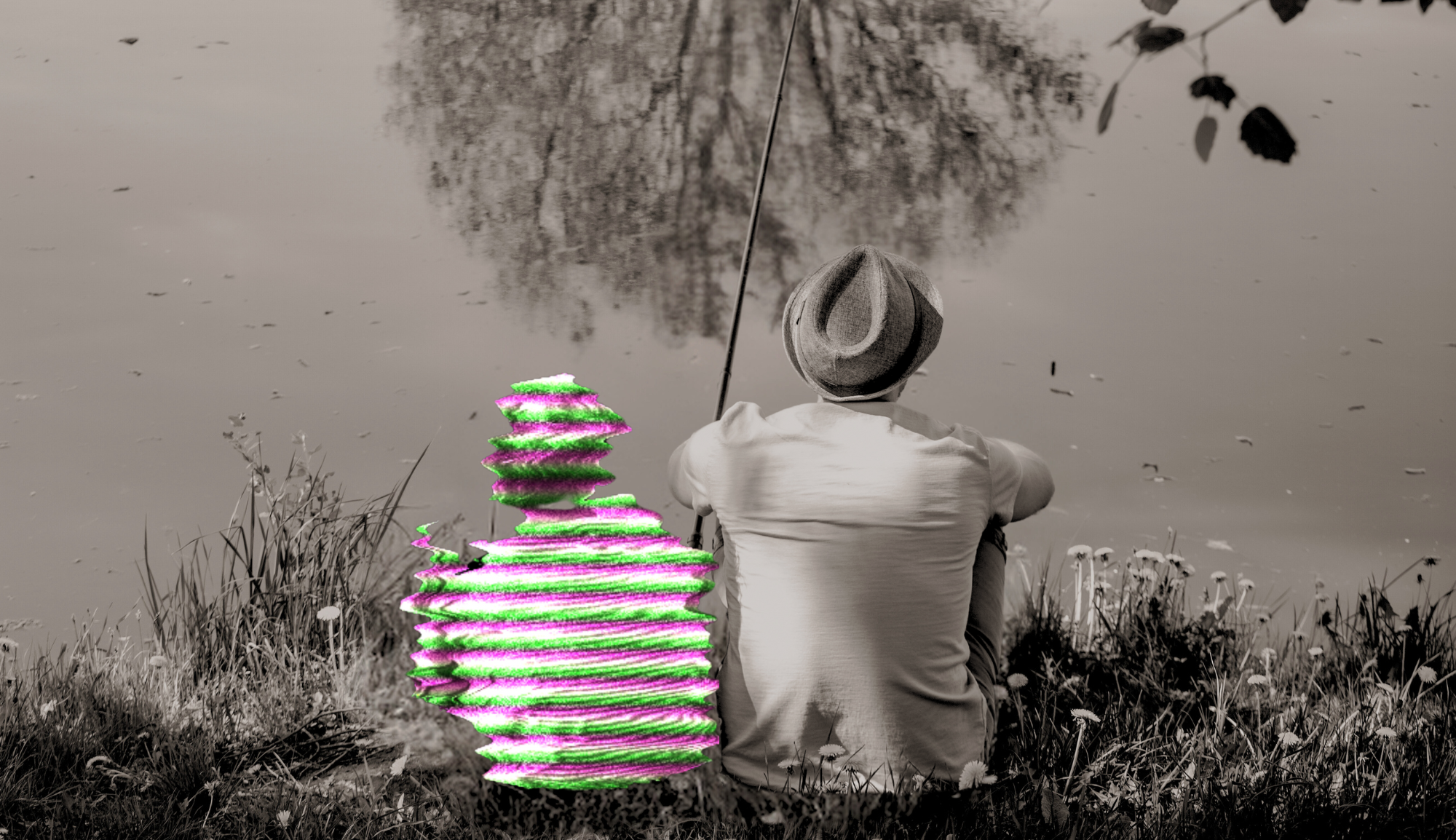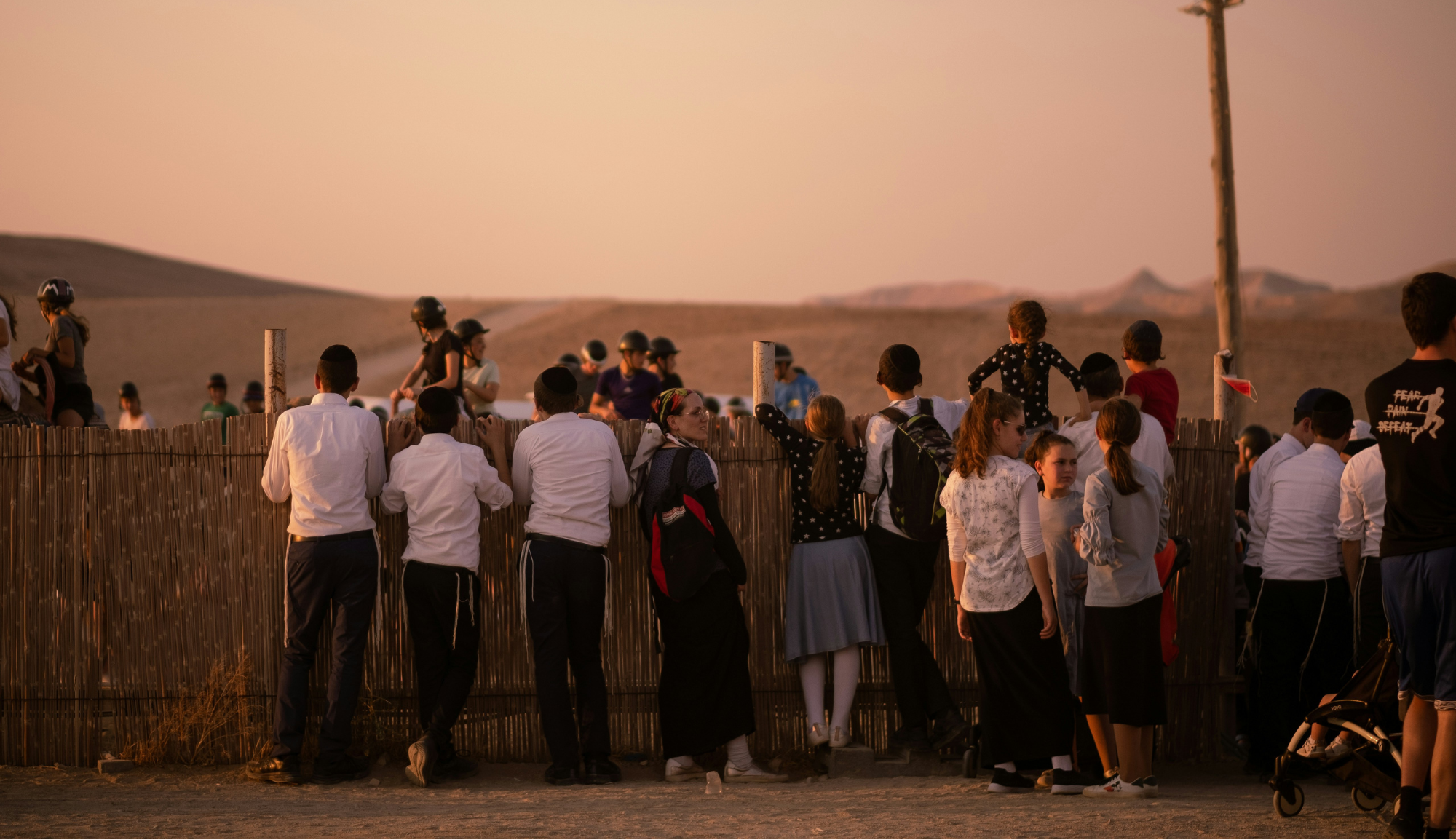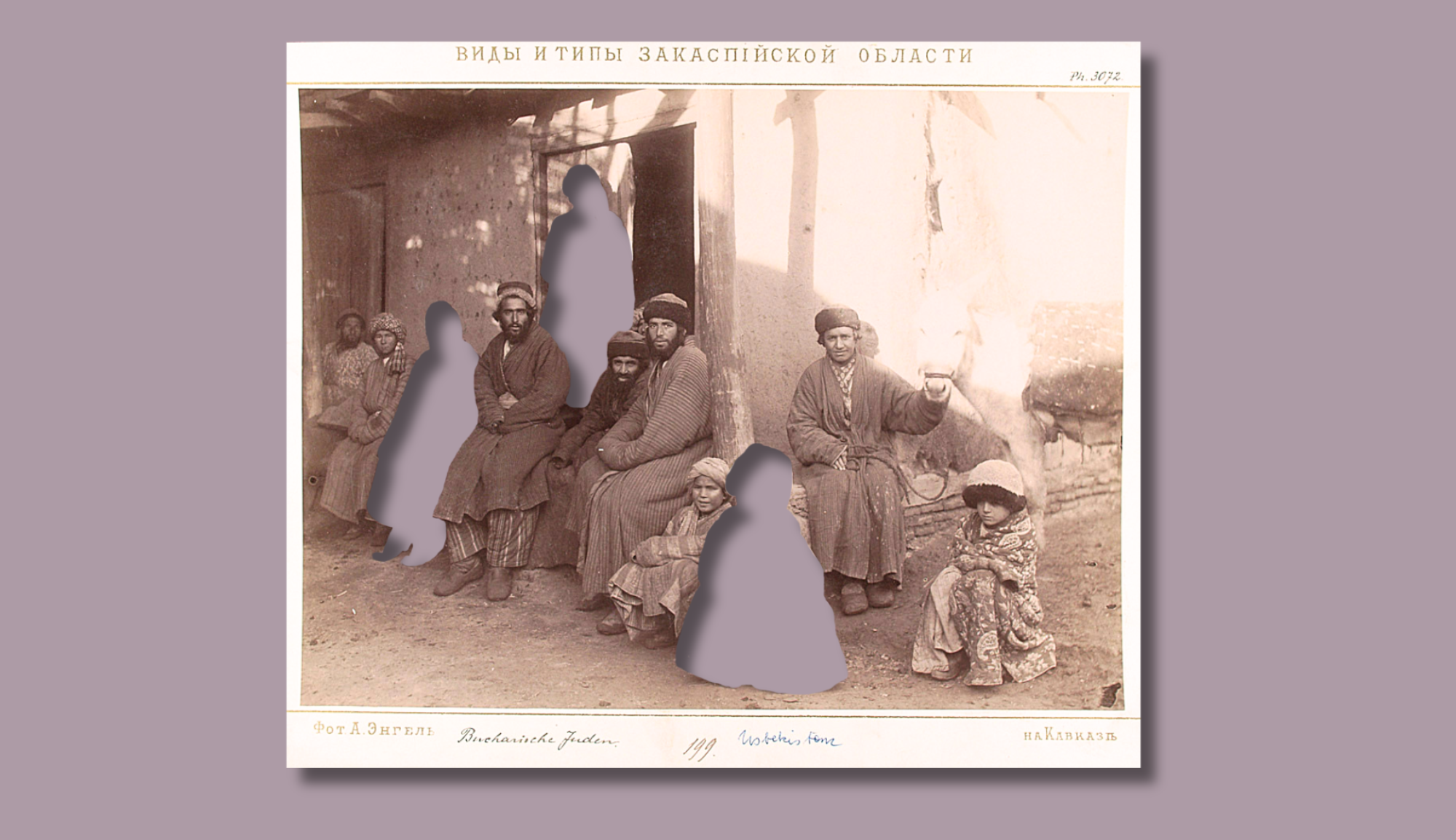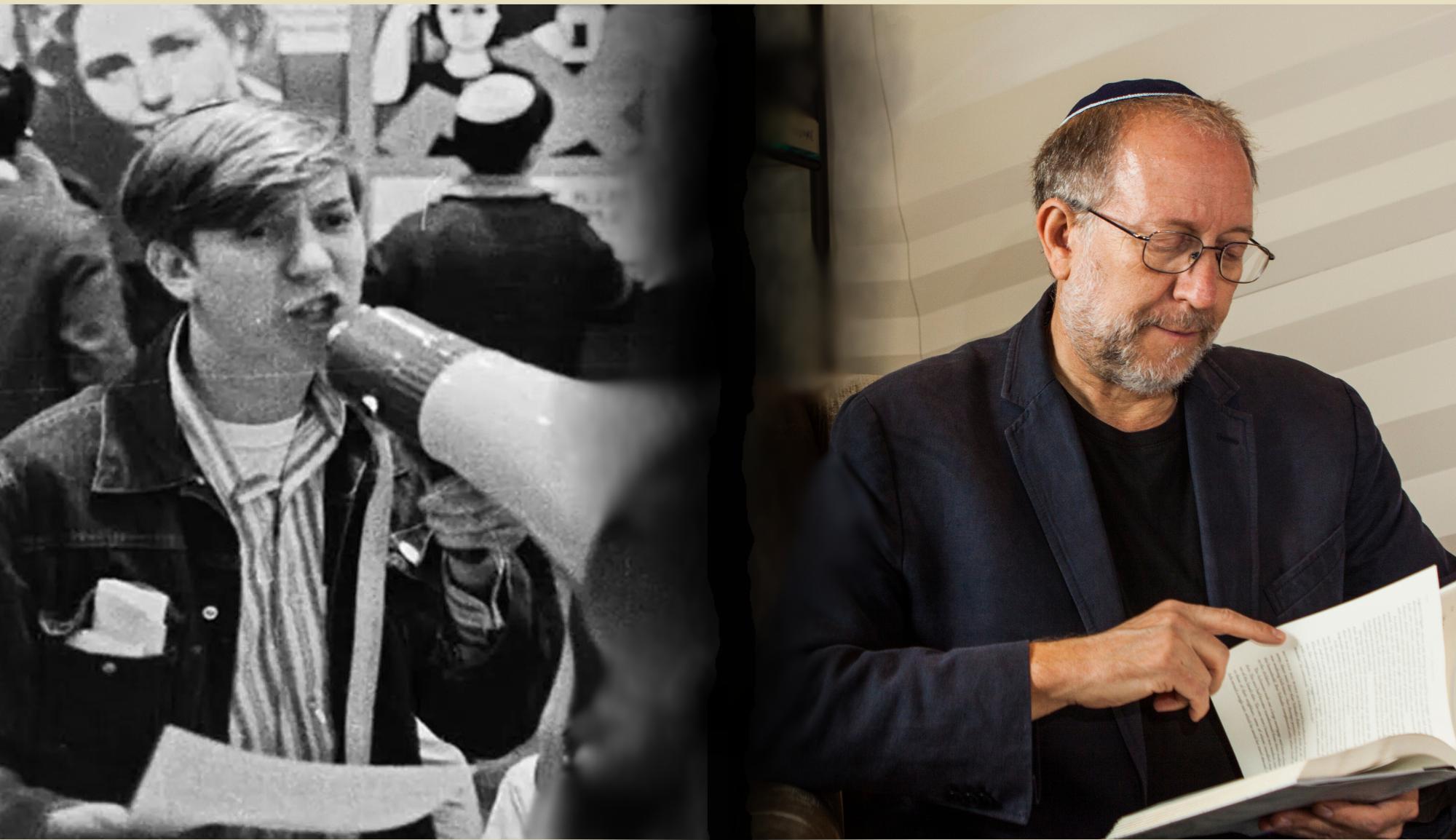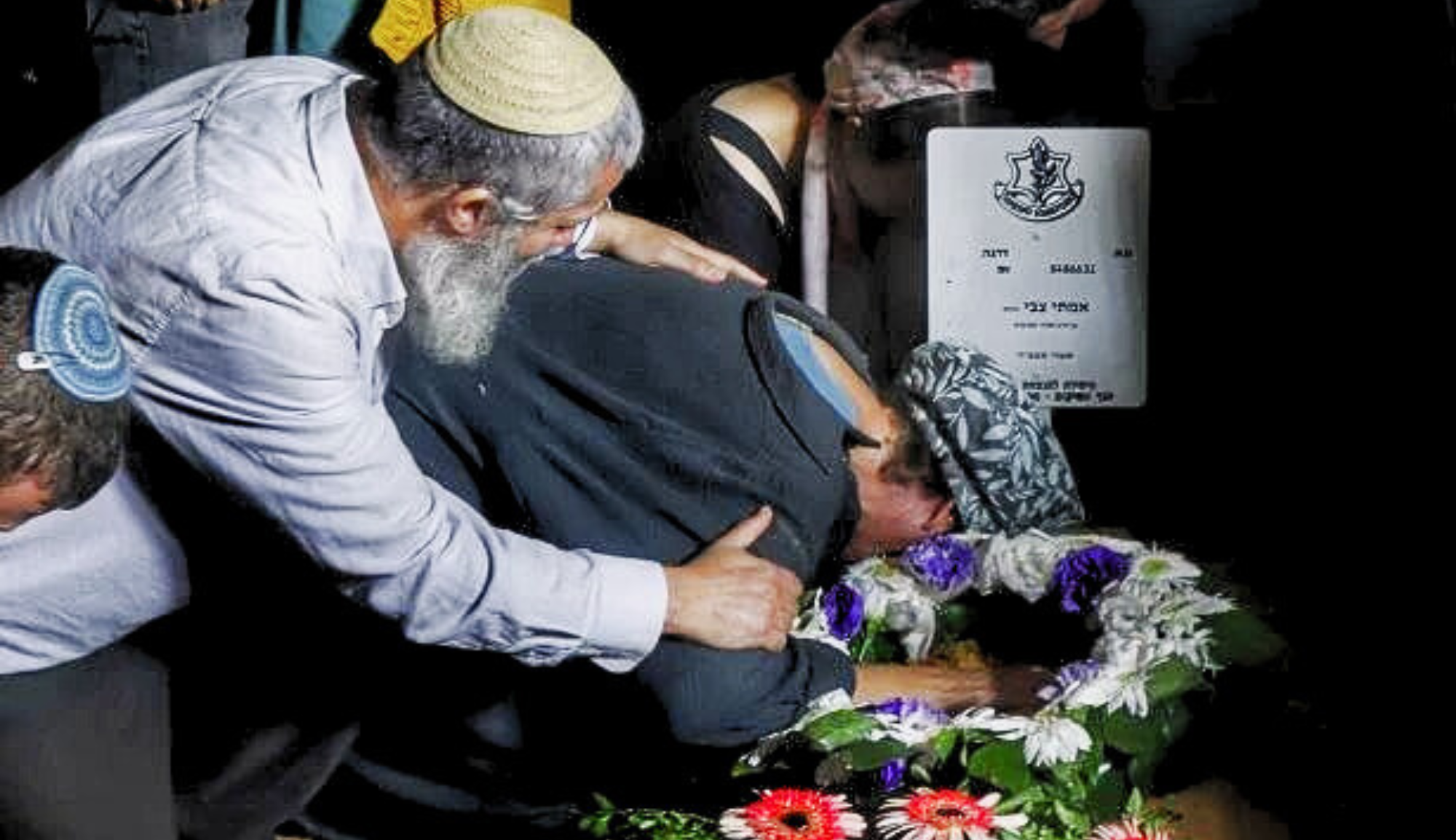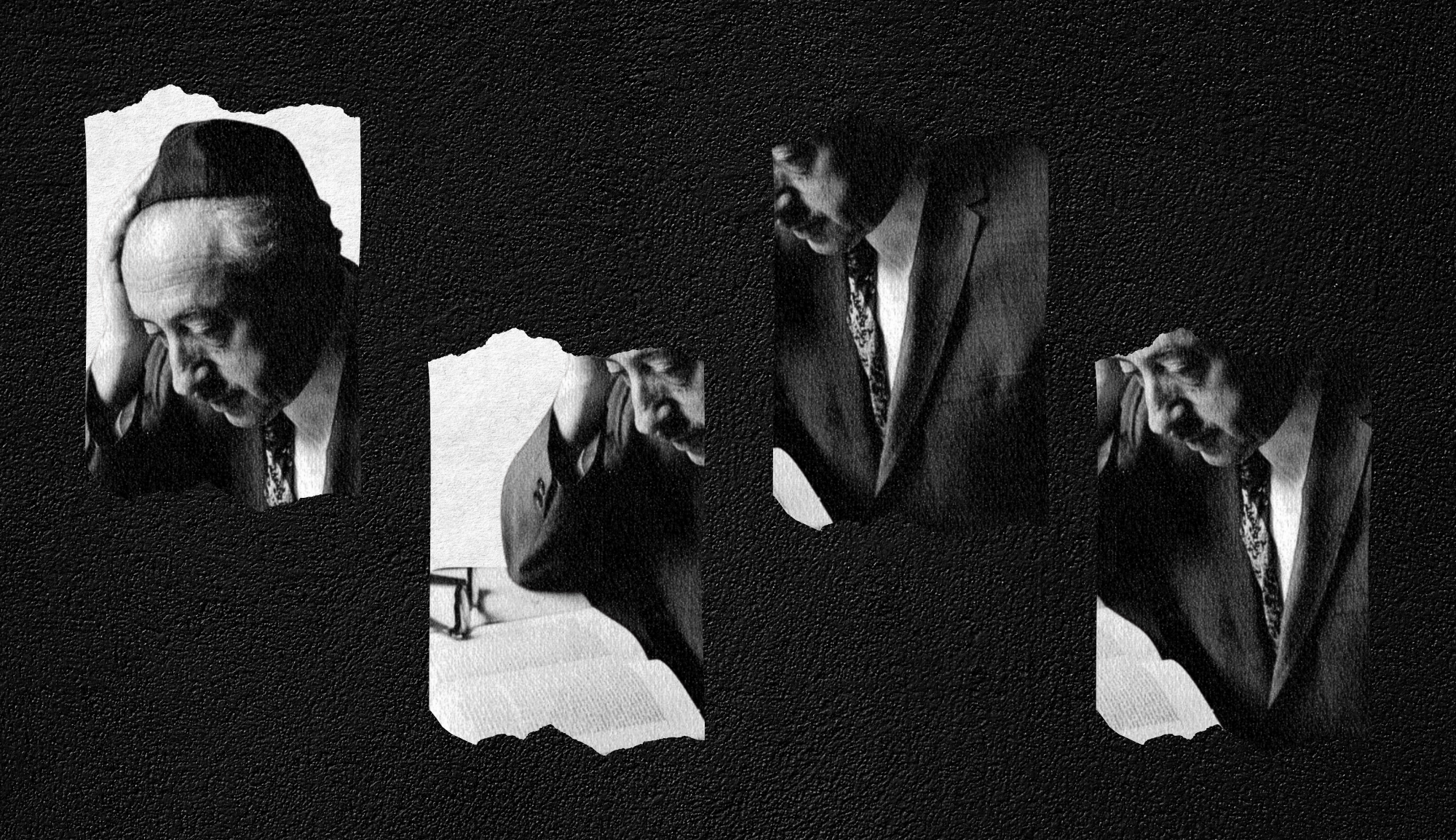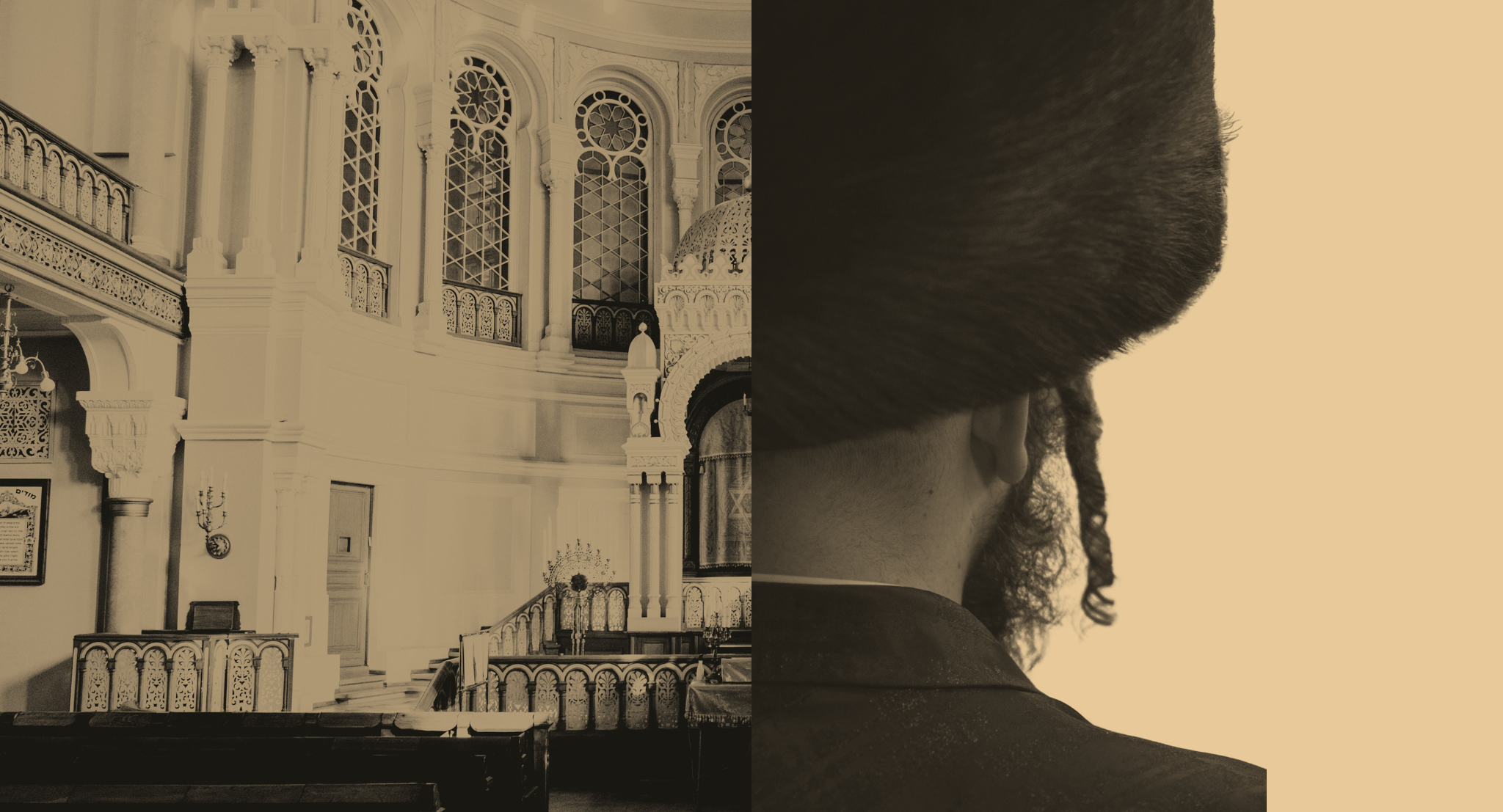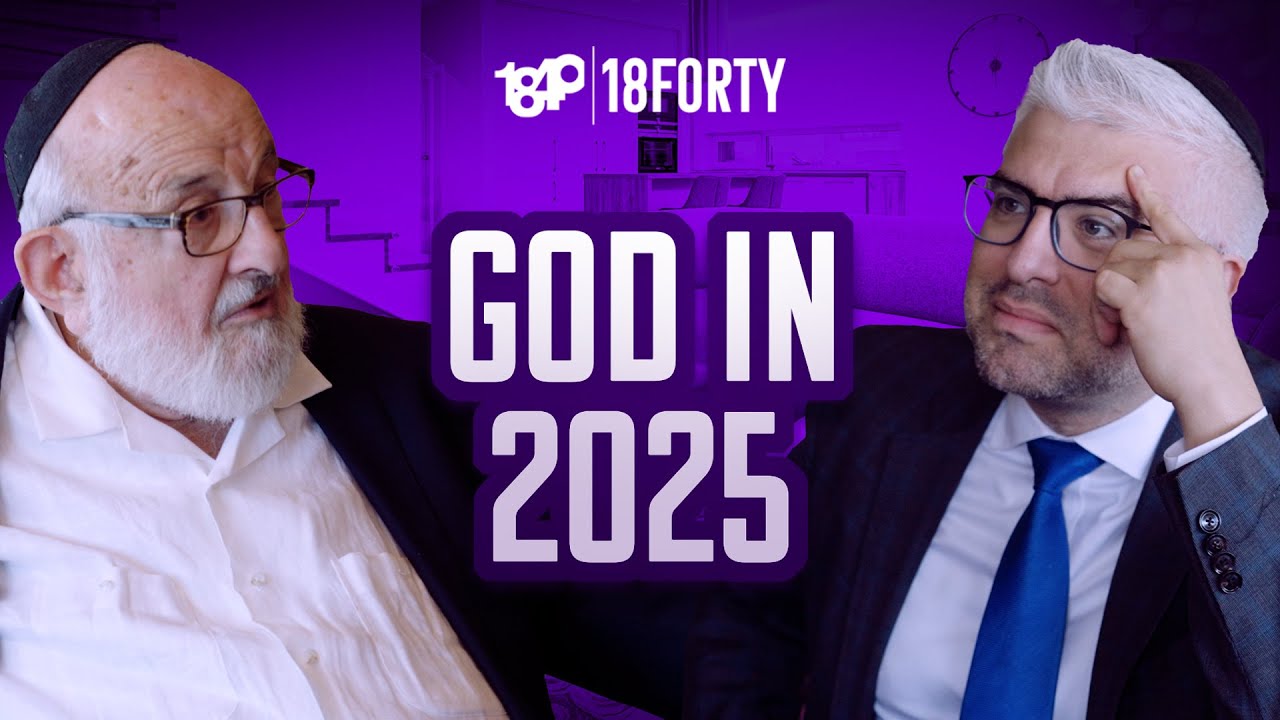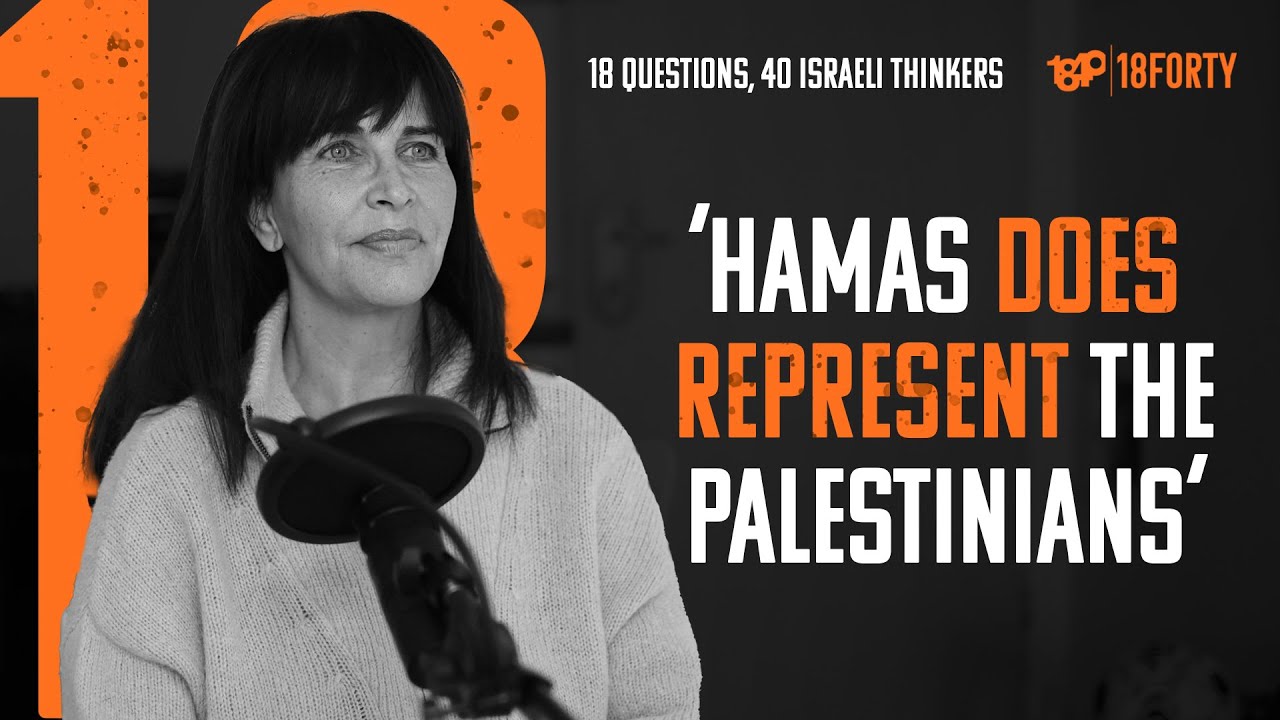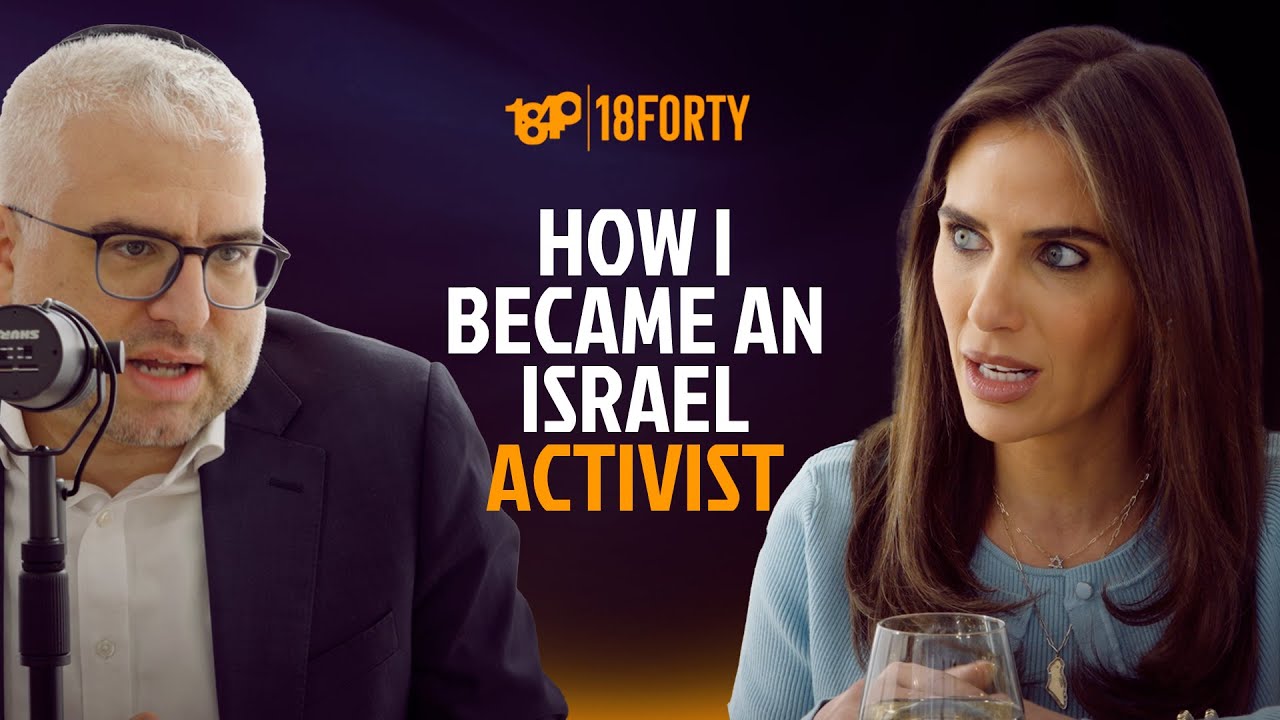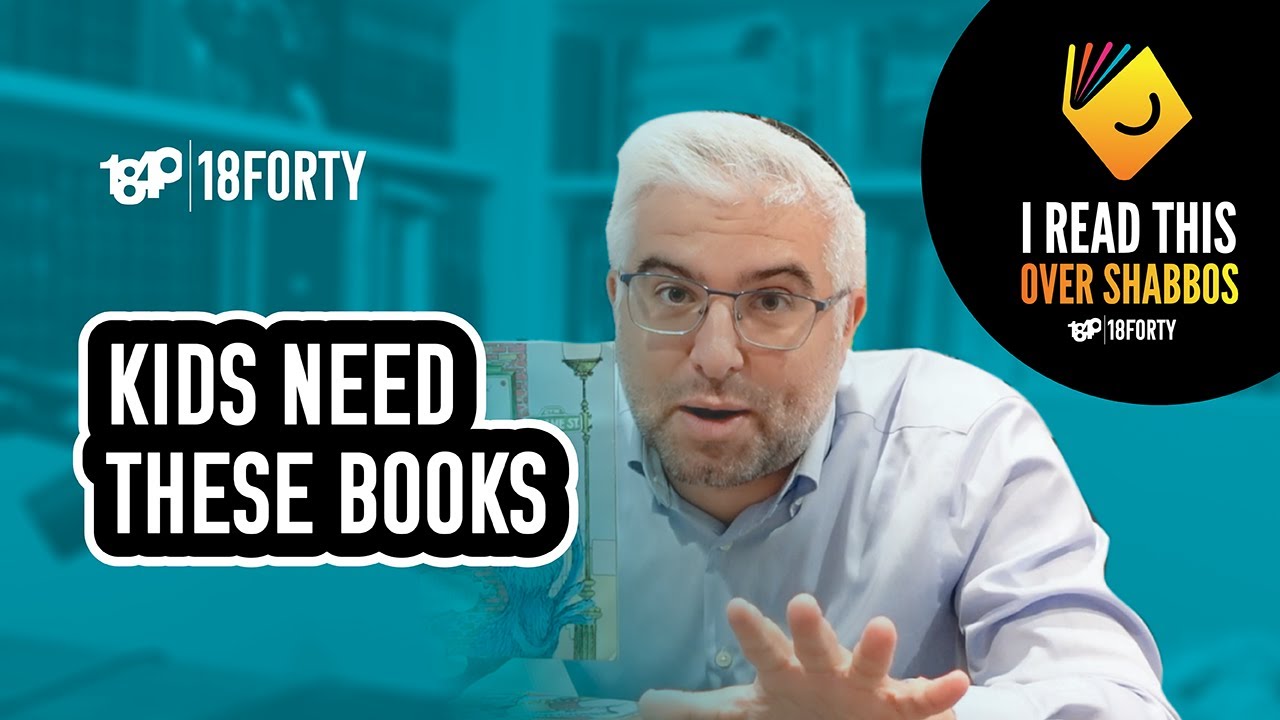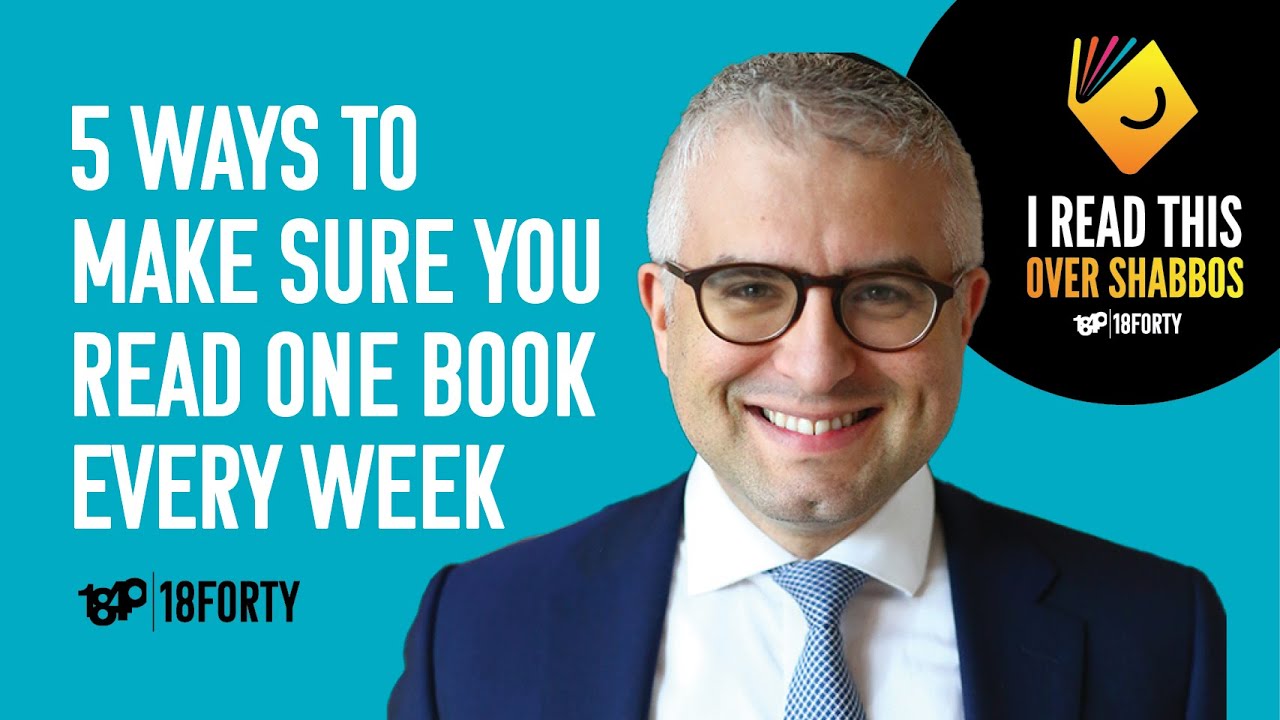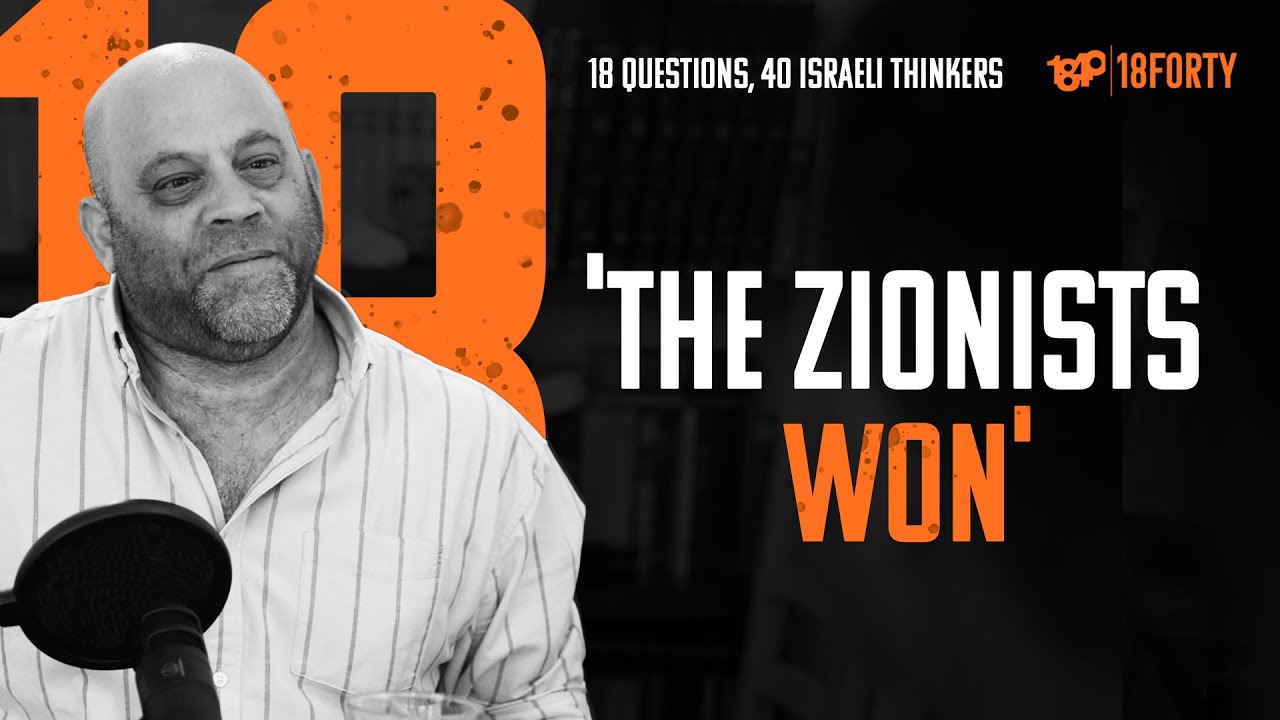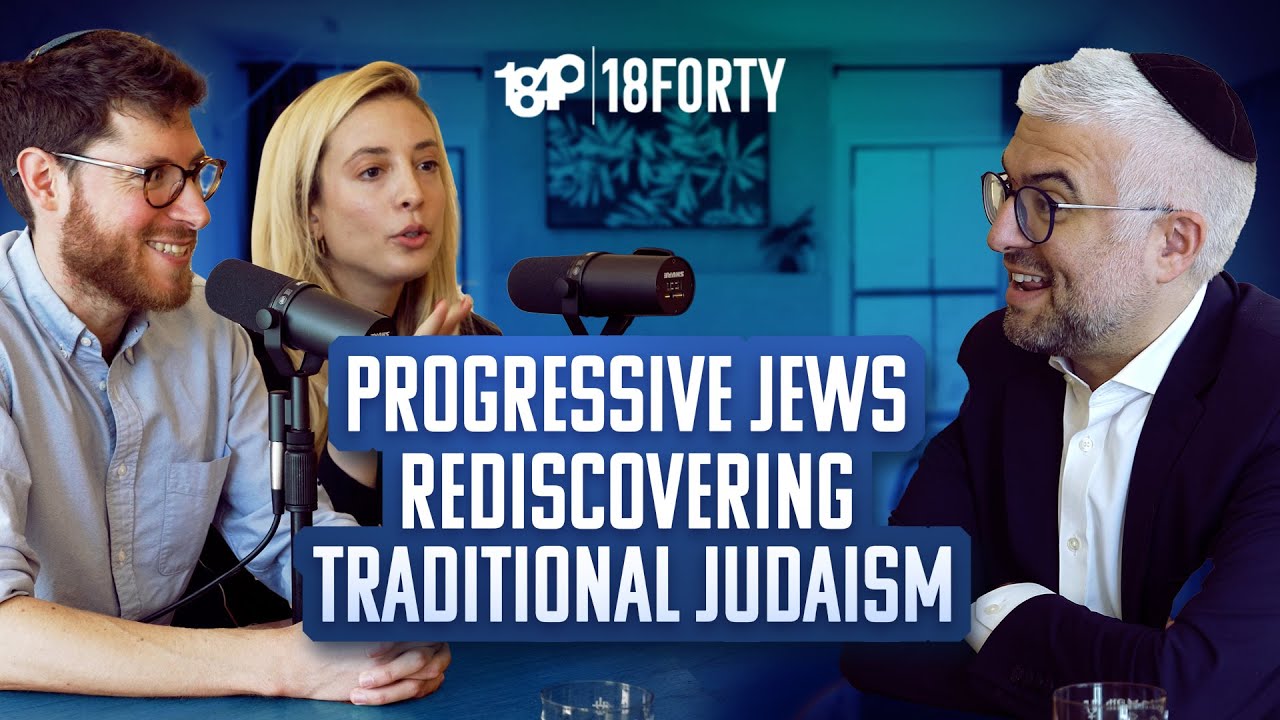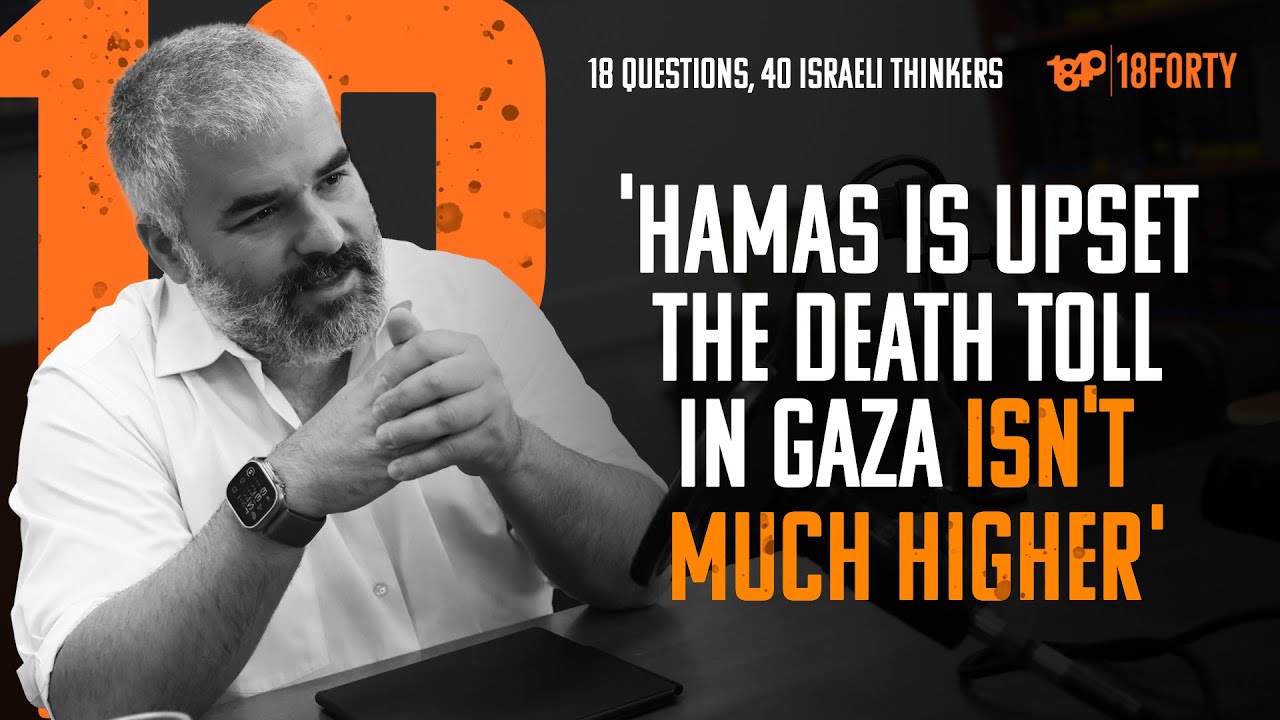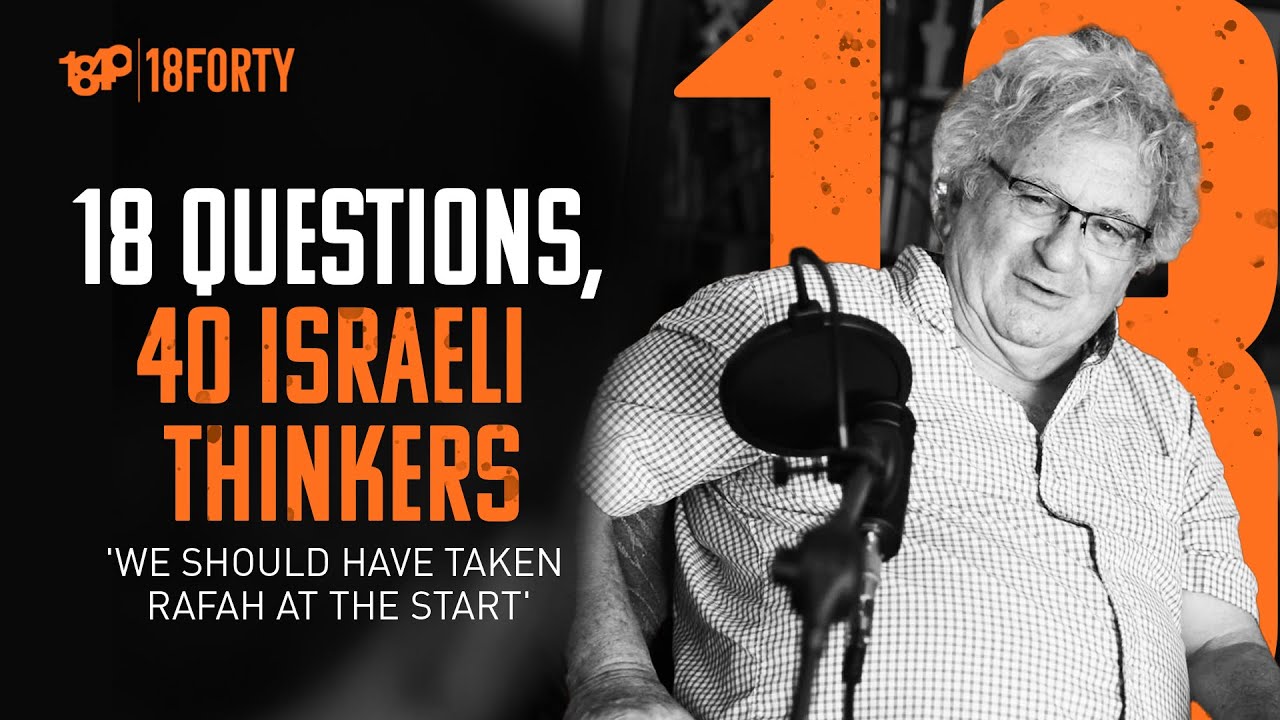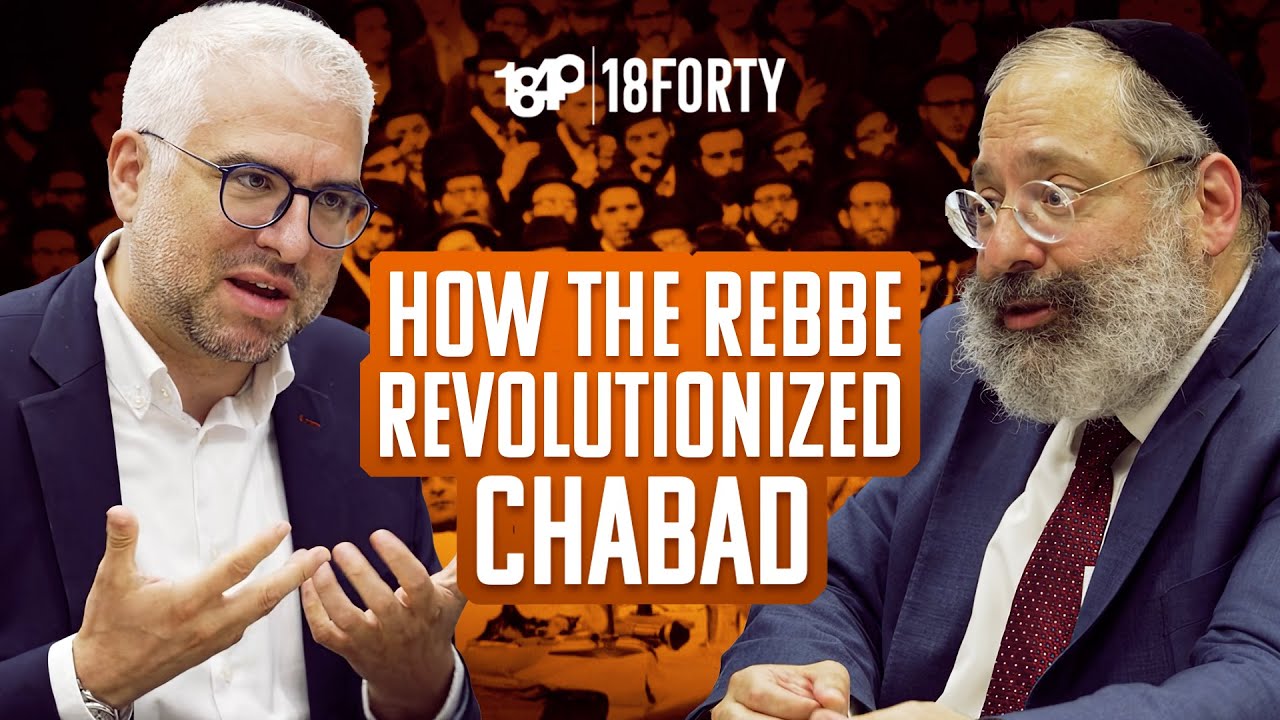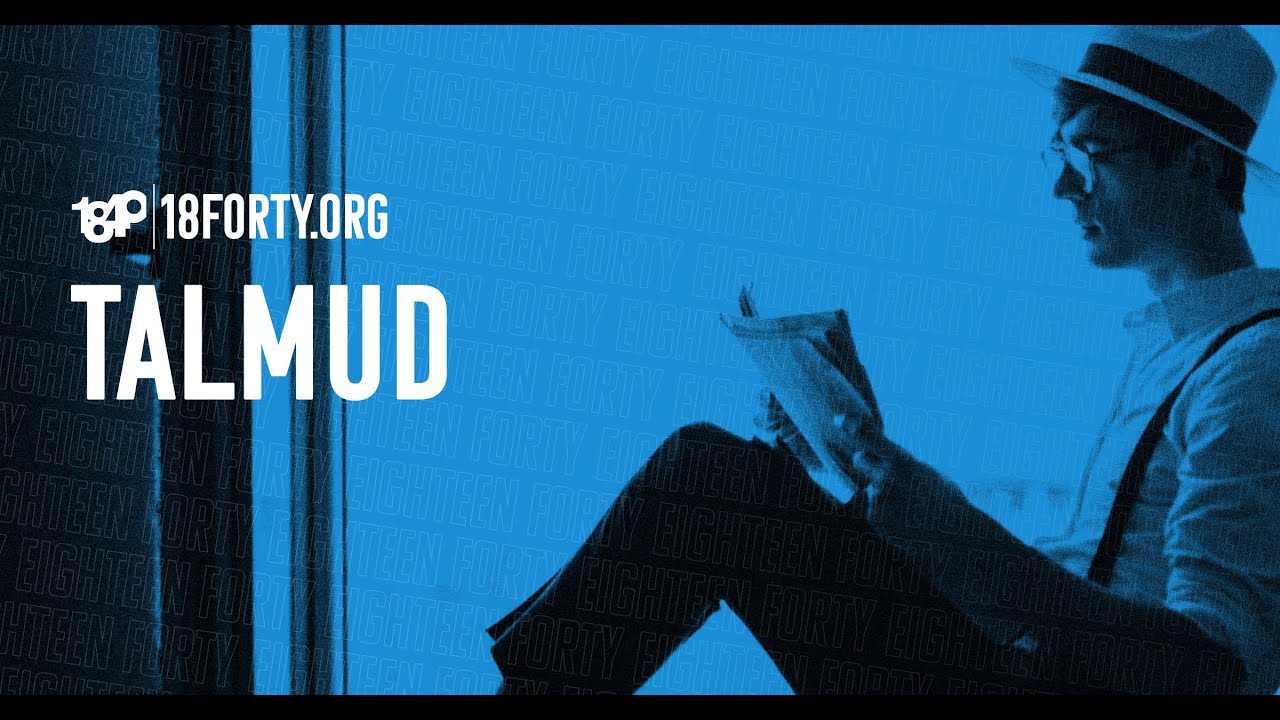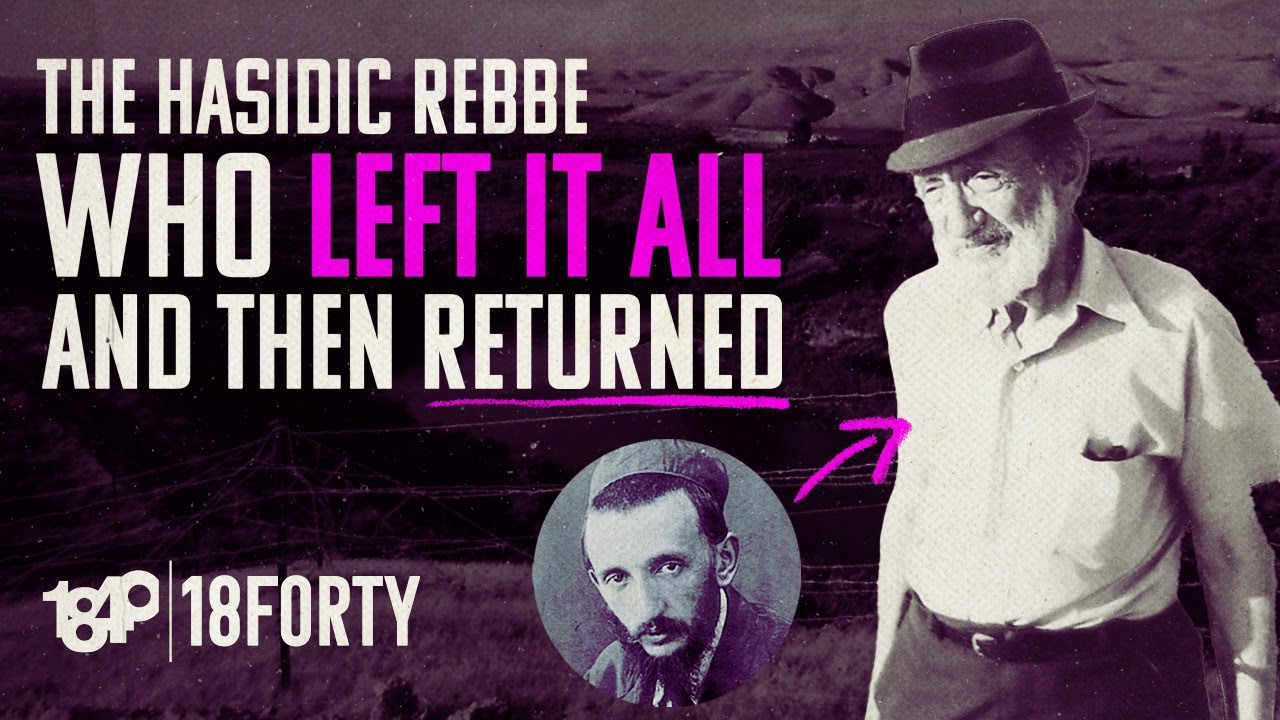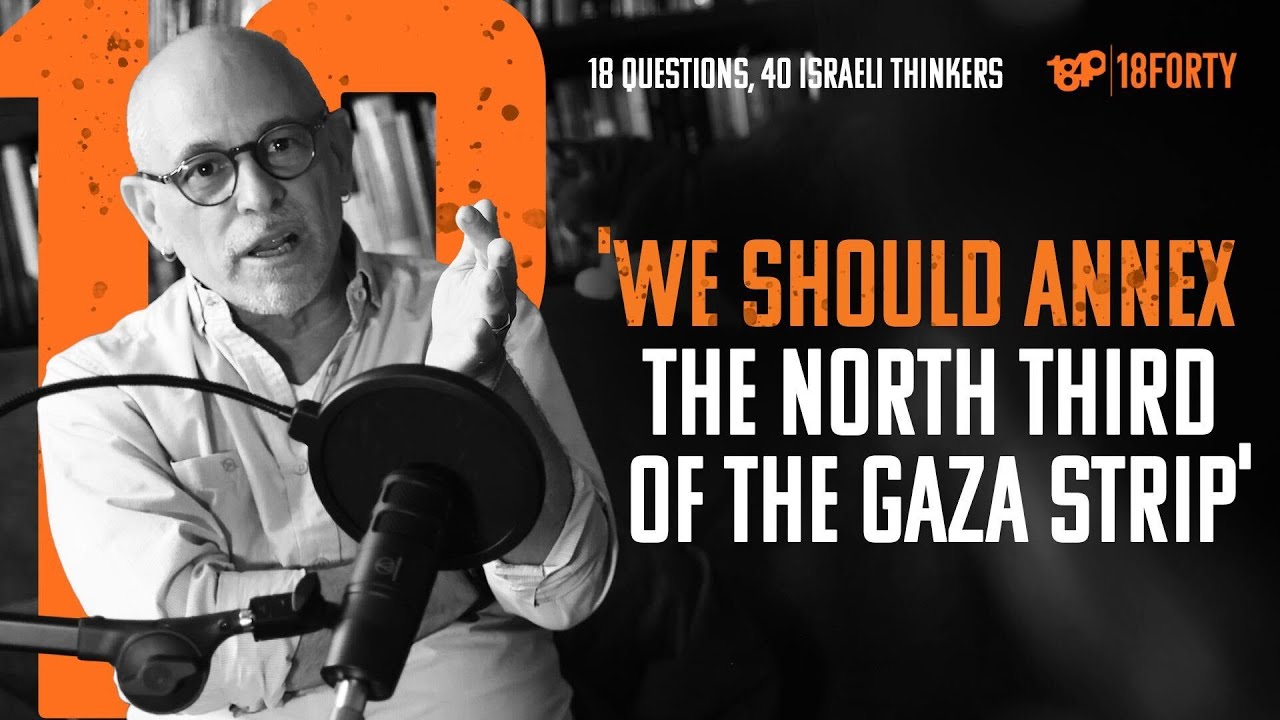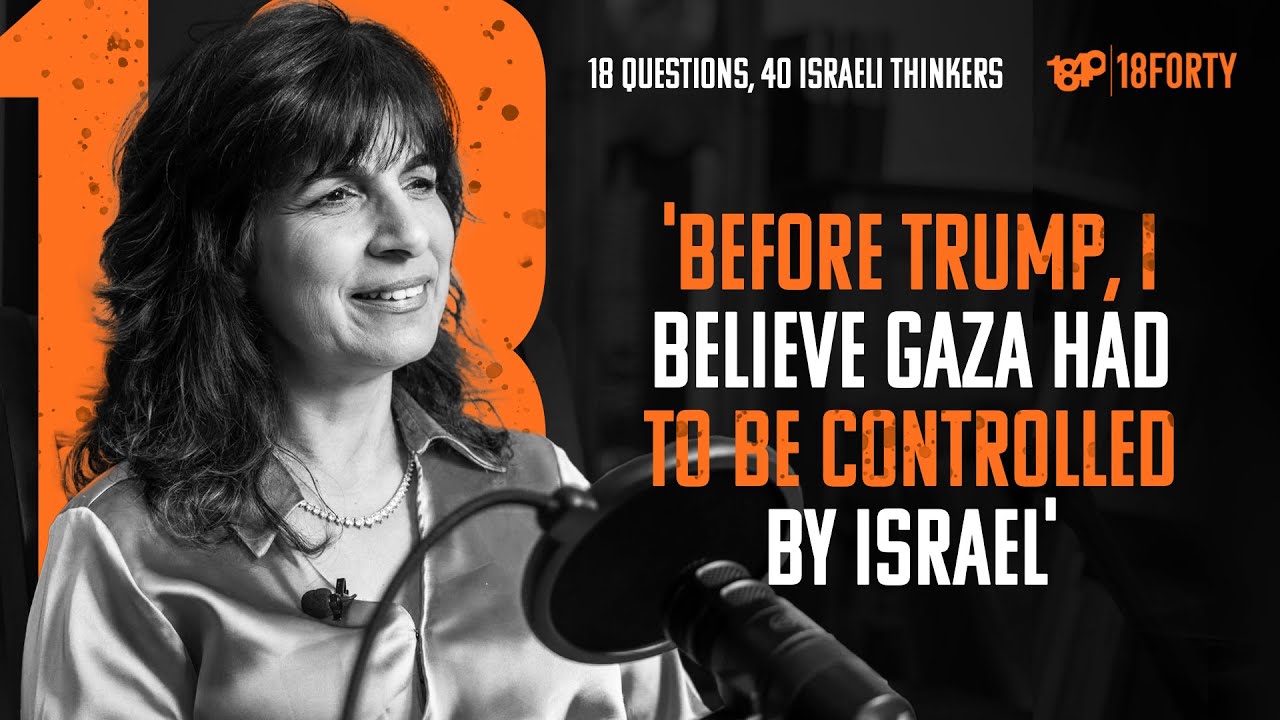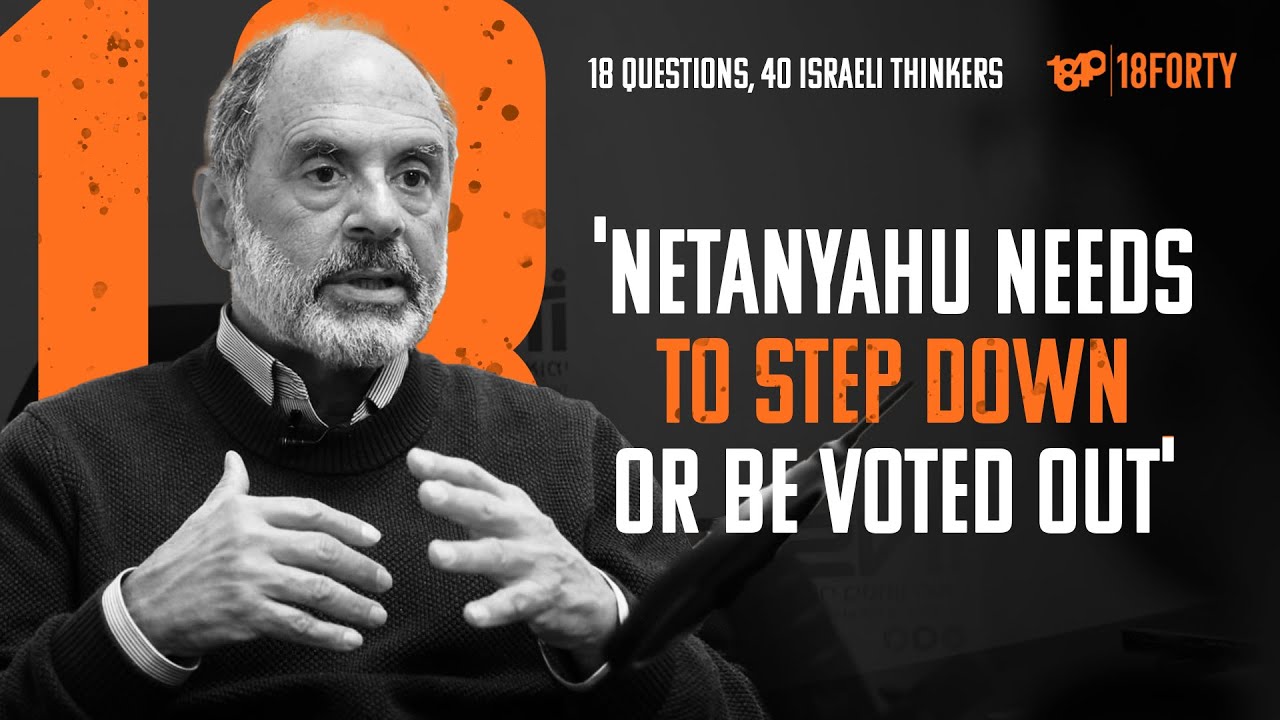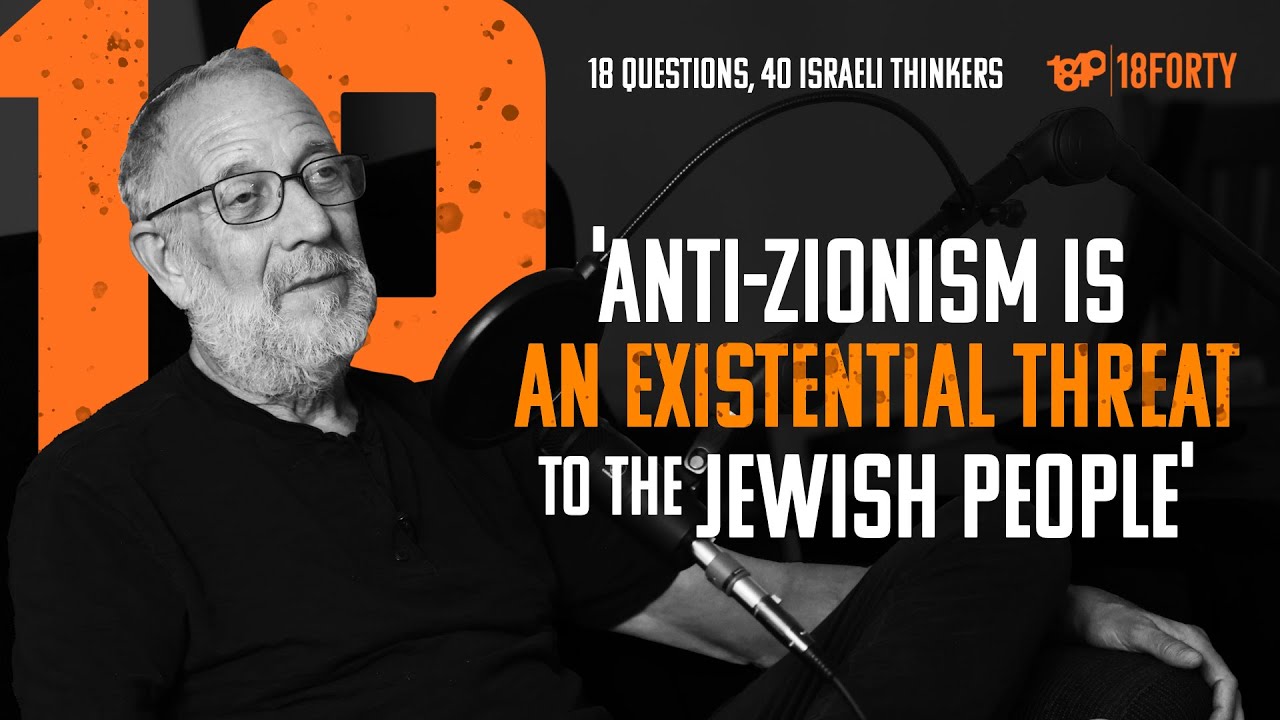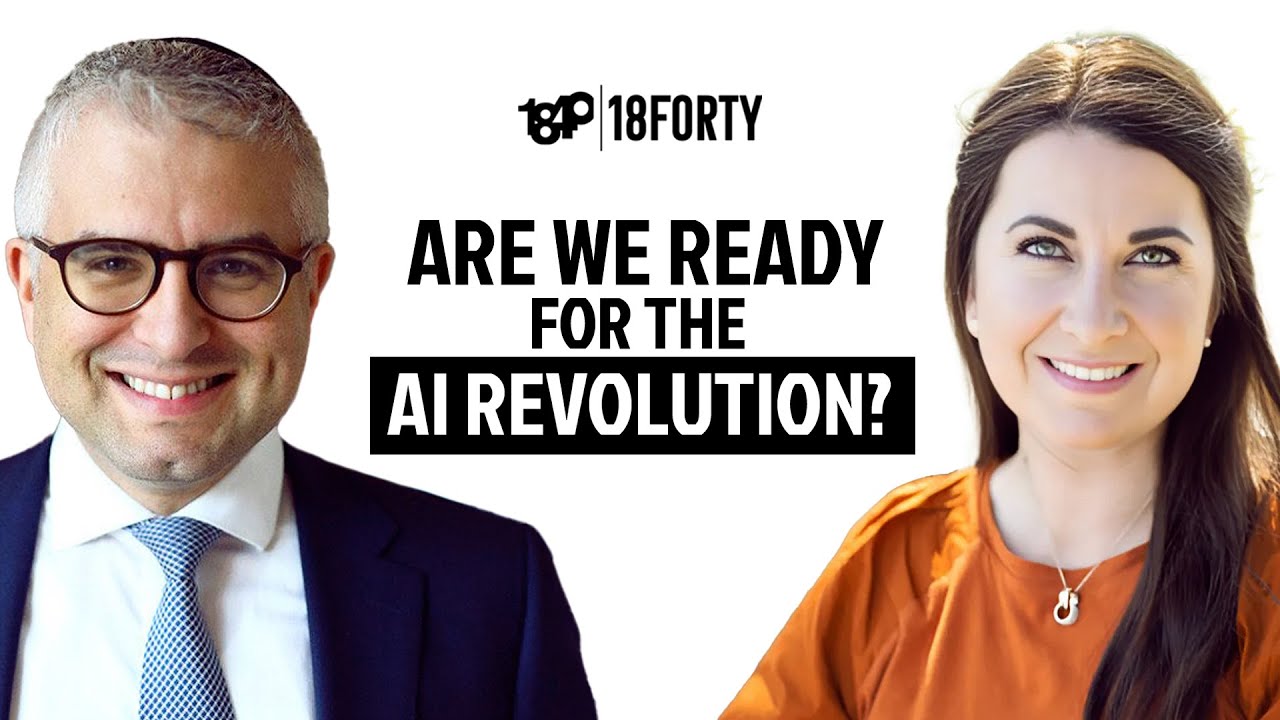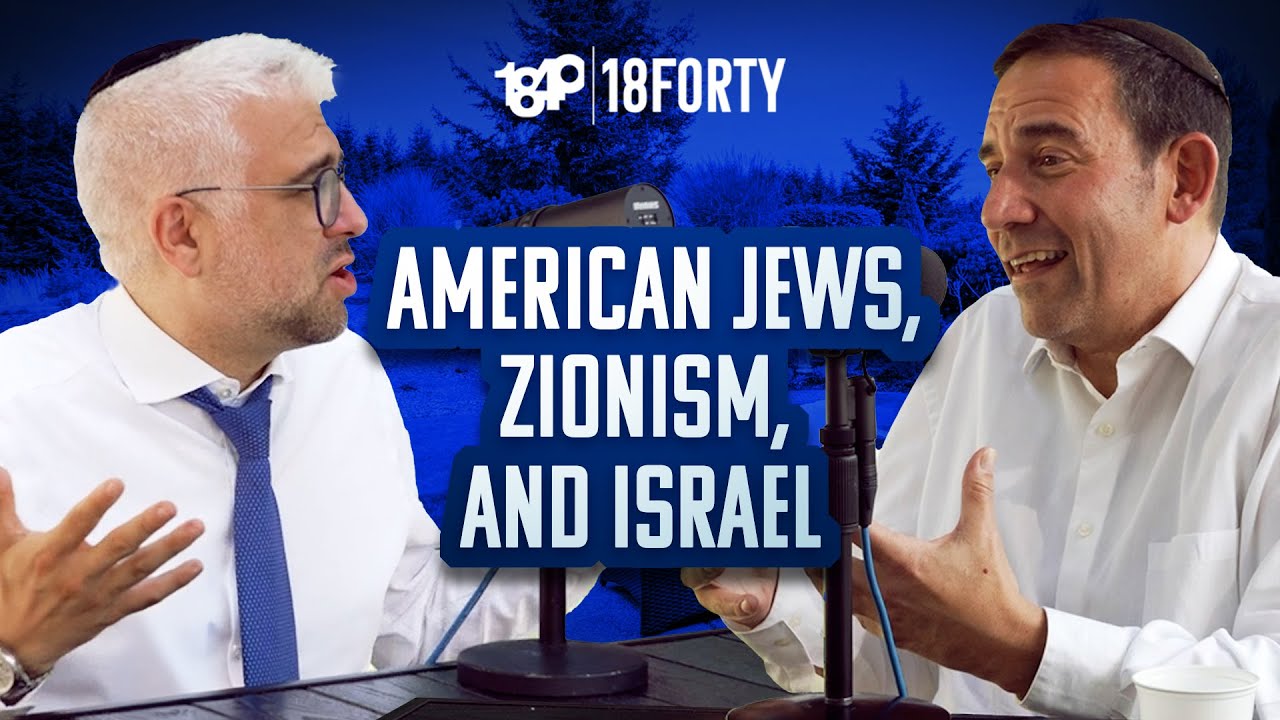Keshet Starr: How Should We Advocate for Agunot?
In this episode of the 18Forty Podcast, we talk to Keshet Starr – CEO of ORA – about what it’s like to work on the front lines of agunah activism.
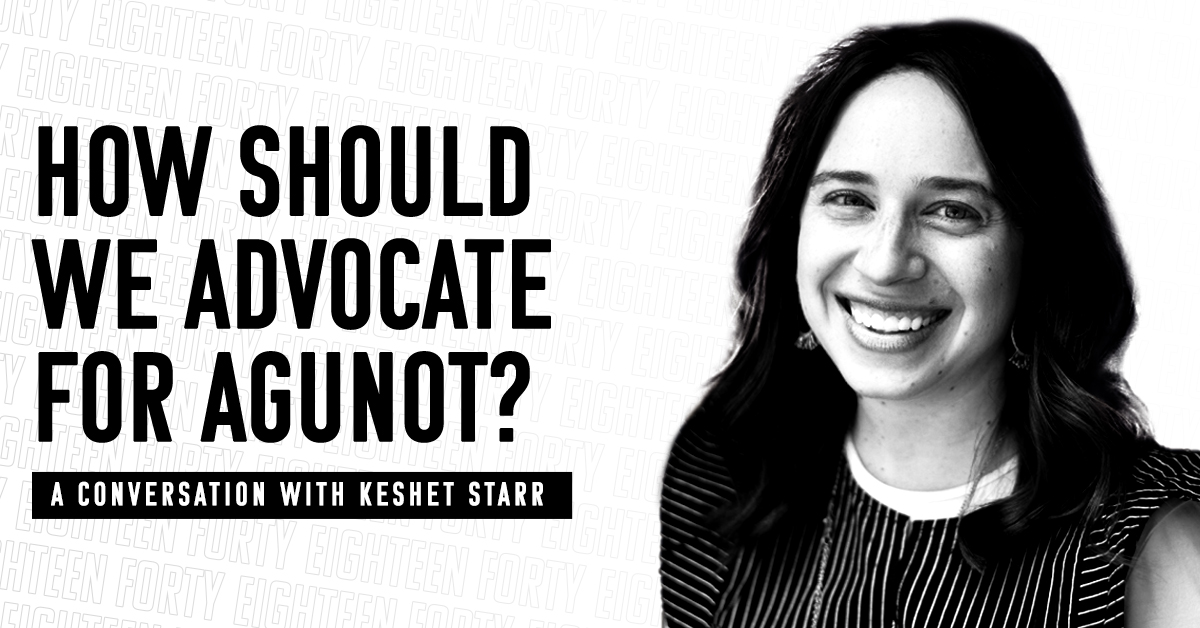
Summary
In this episode of the 18Forty Podcast, we talk to Keshet Starr – CEO of ORA – about what it’s like to work on the front lines of agunah activism.
As the CEO of ORA – the Organization for the Resolution of Agunot – Keshet is directly involved with many cases of get-refusal, working with both parties to ensure a satisfactory resolution. She is also involved in agunah advocacy – both for specific agunot and to raise awareness for the issue in general – and prevention. While many are averse to the concept of prenups, as it makes them uncomfortable, Keshet works to normalize and publicize the halakhic prenup, as well as other agunah prevention tactics.
- What does a typical agunah case look like?
- What steps does ORA take when helping an agunah?
- Do they protest on social media and at the get-refuser’s home immediately, or first verify the details of the case and develop a plan of action?
- Who does the prenup benefit and how does it give newlyweds insurance?
- Does it create a standard for marriage that’s better for everyone?
Tune in to hear Keshet Starr reflect on her work in agunah advocacy, and the contributions she’s made as the CEO of ORA.
References:
Tears of the Oppressed by Aviad Hacohen
Marriage, Divorce, and the Abandoned Wife in Jewish Law by Michael Broyde
Gray Matter by Chaim Jachter
Daring Greatly by Brene Brown
Mrs. Keshet Starr, Esq., is the Executive Director of the Organization for the Resolution of Agunot (ORA), the leading nonprofit organization addressing the agunah (Jewish divorce refusal) crisis worldwide. At ORA, Keshet oversees advocacy, early intervention, and prevention initiatives to eliminate abuse from the Jewish divorce process. Keshet is a Wexner field fellow and a graduate of the University of Pennsylvania Law School. Keshet has written and lectured widely on issues relating to divorce, domestic abuse, and the intersection between civil and religious divorce processes. Keshet brings to 18Forty her passion, wisdom, and commitment to bringing change to individuals and the Jewish world.
Transcript
David Bashevkin:
Hello and welcome to the 18Forty, where each month we explore different topics, balancing modern sensibilities with traditional sensitivities, to give you new approaches to timeless Jewish ideas. I’m your host, David Bashevkin, and this month, we are talking about the topic of agunos: women in chained marriages. It could also be men, as we will discuss and talk about. This podcast is part of a larger exploration of those big, juicy, Jewish ideas, so be sure to check out 18Forty.org – that’s 1-8-F-O-R-T-Y.org – where you can find videos, articles, and recommended readings.
One more super fun thing that I just want to mention off of the top is that our anniversary, our one year anniversary, is coming up soon, and we are asking our listeners, our guests, people within our orbit, to maybe have a little fun and call in with a voice note, voicemail, where your voice, you don’t have to say who you are, Jews hate saying who their name is. You don’t have to say your first name, your last name. But you can call in, give us feedback, ask us questions, and hopefully we’ll have some of our listeners featured on a special episode. You can leave a voicemail at this number: (917) 720-5629. Again, that’s (917) 720-5629. Write down that number and give us a call. Give us some of your feedback. What did you hate? What did you love? What are some residual questions you have?
And we’ve actually been getting quite a bit of feedback on this very topic, the topic of agunos, and that’s absolutely no surprise, as we spoke about in our introduction. This is a fraught topic. I know this because, not only do I know people who have been stranded in these situations, but I know it’s harder to talk about because A, so much of the attention is happening right now. There’s no distance, so to speak, and there’s a lot of attention on this. And I always have the concern that I’m going to say something wrong. And I likely already have in these three minutes that I’ve been talking. We got another one of those emails, by the way, that my introductions are too long. But they’ve also been saying, we want longer introductions, and I don’t know how to make it perfect, but we, as we always do, will keep on trying.
I am so excited about today’s guest, and I picked the guests very carefully and very deliberately, because when the attention to this issue came out, I know there are people who bristle at the notion of even talking about this, because in their minds, there is this sense of trying to resolve, or bring any change to the world of agunos, necessarily means the abrogation, the change, the deterioration of our Halakhic norms and systems. And that was not really something that I wanted to be party to. I think what we try to do on this podcast is figure out how, within that normative world of commitment to Halakha, that normative Jewish world, how can we still find that creativity, that excitement, that joyfulness, that satisfaction that we all seek, even through points of dissonance? And there’s no question that this topic is one big point of dissonance.
I was thinking before I introduce our guest of some of the pushback of why this topic is fraught for many people. So I actually have a personal story with this. A lot of the pushback has to do with earlier changes that people made, or suggestions to the institution of marriage within the Jewish community, and how they were summarily, rightfully rejected. One of the most notable rabbis to do that was rabbi Emanuel Rackman, who my life has kind of crossed paths – I didn’t know him personally, he died when I was in Yeshiva. I was actually at his funeral, which I have a story about.
But Rabbi Rackman did make fairly radical suggestions about how we should address the issue of agunot. And it was pushed back quite forcefully, quite emphatically, by Rabbi Soloveitchik. I believe in an address to the RCA, the Rabbinical Council of America, he said, “Even knowing all of the empathy and sensitivity needed, we can’t just willy nilly” – it’s a word Rabbi Soloveitchik liked to use a great deal if you’re familiar with his writing. I have no idea why, but I also have fallen in love with the word “willy nilly” from the writings of Rabbi Soloveitchik. It doesn’t get enough attention. When you think Rabbi Soloveitchik’s writings, you usually think of the words like “ontological,” “epistemological”. He liked those fancy words. The term that doesn’t get enough attention, without a doubt, is the term “willy nilly”.
And we can’t be willy nilly with our Halakhic institutions. There’s no question about that. And he pushed back quite hard on Rabbi Rackman. Now it happens to be Rabbi Rackman was, I believe, the founding rabbi of my childhood shul, which has over the years gone quite a bit far from the personality of Rabbi Rachkan and some of the controversies that were associated with him later on in life.
And not only that, but I went to Yeshiva with Rabbi Rackman’s grandson. And after Rabbi Rackman died, he left an incredible, incredible library, and I remember his grandson, after the family all took what they wanted, invited me and one of my dear friends, his name is Aryeh, and we drove out -we got into a car accident on the way. A little bit of a fender bender, but it took about three months to resolve – to Rabbi Rackman’s garage, his son’s garage, where we got to take the seforim that we were interested in, because the family had already taken. I remember being struck by how many copies of this book, this soft cover, a big, large pamphlet called Tears of the Oppressed, which was a book I believe that Rabbi Rackman commissioned to talk about agunot, even though his suggestions were very much rejected by most leaders and Halakhic thinkers in the Orthodox community.
Interestingly enough, I did go to Rabbi Rackman’s funeral. And I remember at his funeral, I saw my childhood rosh yeshiva, the head of the elementary school that I went to. I went to Yeshivas Toras Chaim of South Shore. And at the funeral, it was an incredible funeral, being a part of Jewish history. He was over 100, I believe, when he died. And I remember Deborah Lipstadt spoke at his funeral.
And I remember looking down and seeing somebody with a frock and an up hat, not somebody who I would have thought who would have showed up to Rabbi Rackman’s funeral, who came from a storied rabbinic family. His father has a collection of correspondence with so many leading Jewish thinkers called Kiryas Chana David, I believe, a fabulous collection of Rabbi Rackman’s father’s correspondence with people like Rav Kook and so many other Jewish leaders at the time.
But at Rabbi Rackman’s funeral, I looked down, I was sitting on the balcony, and I saw somebody wearing a frock and up hat, and I noticed that this is the rosh yeshiva from my elementary school, Rabbi Binyomin Kamenetzky, who also has since passed away. He was the son of Rabbi Yaakov Kamenetzky, a famous Torah leader in Canada and America who originally studied in Slabodka. You can learn more about Rav Yaakov Kamenetzky on our dear friends’ podcast, Yehuda Geberer’s Jewish history podcast. I think he just spoke about Rav Yaakov Kamenetzky. And we saw his son Rav Binyomin there, and I remember a few weeks later, Binyamin was fairly sick at the time. And a few weeks or months later, maybe even after he passed, I have to remember. I went to South Shore and I asked him, I said, “It was so interesting, what was Rav Binyomin Kamenetzky doing there?” He was aligned with more of a right wing, Orthodox community. I wouldn’t have expected to see him at Rabbi Rackman’s funeral.
And he told me something really remarkable. He said that when they first starting the five towns, when they were first building the community of the five towns – and a little trivia of which are the five towns, you could ask yourself, you can name all five – he was starting South Shore and the girls school, and they had difficulty fundraising. And Rabbi Rackman at the time was far more famous, far more established. And he sent donors to help Rav Binyomin Kamenetzky establish what is now the Woodmere community, and the schools, and the girls’ school that he helped set up, which I believe was TAG. I think all of this, I may be getting a lot of facts wrong here, but he definitely sent donors to Rav Binyomin Kamenetzky to help this fledgling person rise up and establish himself, which has now transformed the entire Woodmere community.
So after seeing Rav Binyomin Kamenetzky there, even though there are those who have very serious objections to Rabbi Rackman and his suggestions, particularly on the topic of agunot, as Rabbi Soloveitchik expressed, and we could have links about some of those debates on our website, but I think there is a measure of respect and appreciation that we should still have for his contribution of how he built Torah in America. We have a hard time imagining what that world was like in the 19, I don’t know, ’50s, ’60s, when he was the rabbi of Shaarey Tefillah, where I grew up, and really helping rabbis, regardless of their specific affiliation, build communities. Which is really something remarkable. And it is nice that in my library now, I still have books from Rabbi Rackman’s library. I think my most prized possession is the work called Meishiv Milchama, which is about the laws related to the army, written by the chief rabbi Rav Goren, who was the chief rabbi of Israel. I believe the third chief rabbi of Israel, third or fourth chief rabbi of Israel. And Rav Goren inscribed it to Rabbi Rackman. Rav Goren had his own controversies in his own right, but it was really nice to see them corresponding with one another.
Our guest today is Keshet Starr. And Keshet Starr is the chief executive officer of an organization called ORA, which is the Organization for the Resolution of Agunot. I did not know much about ORA, the Organization for the Resolution of Agunot. I always looked at it, and really for personality reasons, with a degree of, I don’t know, suspicion. I’ll be perfectly honest with you. I always get nervous. I’m not the rally type. Even when I believe in the cause, I’m just not the type to sit outside of the house and scream into a megaphone. It’s just not my personality. It’s not my style. I don’t know that I would be able to do that. Not because I don’t take this issue seriously, but I genuinely have a hard time doing that. It’s actually interesting. When ORA first started it was run by somebody named Jeremy Stern. He was before Keshet Starr. And there was a fellowship in YU for rabbinical students that I applied for, and I lost out to Jeremy Stern, until he announced that he planned on making aliyah. And then I actually got a spot in the fellowship. I believe you could still look it up. You Google my name and rabbinical fellowship. You could still find out there’s a whole story about that fellowship. But Jeremy Stern almost got my spot in that fellowship.
And since moving on, he works for a different organization now. Keshet Starr, who is a lawyer, who works at, is the chief executive officer for the Organization for the Resolution of Agunot, really helped me understand what on earth do they do. It’s a lot more than just protesting outside of homes, which was kind of my visceral reaction. “It’s just not my style. I don’t know that I could do that.” And there’s so much more that they do behind the scenes that’s actually quite more impactful. And she has a really fascinating perspective on what role that imagery and the protests, all of that has in the larger process of agunot. It’s really the method of absolute last resort. And I think the work that she’s doing is absolutely crucial and absolutely fascinating, which is why I am so excited to share with you my conversation with Keshet Starr.
So I want to begin not with the beginning of the story of agunot, which stretches back. I mean, we have the Talmud, the Gemara talks about this. I want to go back to eight weeks ago, where all of a sudden, it seemed like out of the clear blue sky, social media had a renewed emphasis, something like I’ve never seen before. I’ve seen trickles here and there, but I don’t want to use the word “weaponizing,” because that sounds too negative, but advocating on social media for the plight of women – and I haven’t seen any, but perhaps men – but women who are stuck in marriages. They cannot get their divorce document according to Halakha, known as a get. And there’s so much advocacy going on social media. I want to hear from your perspective, how did this begin? You’re an organization that, you could tell me a little bit about what you do, but why all of a sudden are we seeing so much attention about this on social media?
Keshet Starr:
So it’s such a good question. And it really started with one case. There is a woman named Chava, who was pursuing a get, had some hesitations about taking her story public for some time. Decided to go ahead and let it go public, share the story with the world. And it’s always hard to know, and I’m no social media algorithm person, so it’s always hard to know why this story at this moment, what’s going on in the news cycle, and just the culture, that has something take hold like this. But I imagine that maybe a little bit of what happened is that so many people don’t realize that get refusal really happens. I get a lot of questions when people hear that I work on get refusal full-time. Many people will say like, “Is that two hours a week?”
David Bashevkin:
Yeah is that a hobby?
Keshet Starr:
Right. Who wants to do that on the side when you’re doing your real job? People are really surprised.
David Bashevkin:
“I like painting, woodworking. I do get refusal.”
Keshet Starr:
Exactly, from 8:00 to 10:00 on Monday nights. So people are really surprised that this happens. And I think that it’s human nature, even if we know that it happens, we assume that it happens to someone else. Someone who maybe had their own issues, or maybe wasn’t perfect themselves. But when you hear a story, and you see a face, and you realize that, “Oh my gosh, that could be me. Or that could be my friends, or my sisters, or anyone that I know.” There’s something really powerful about that. So I think for whatever reason, this was the right story at the right time, but it created this sort of movement that I think started on social media, but we also saw the power of social media in that it really trickled outside of that. It started as something that was just happening in the Instagram square on your phone, and it grew beyond that into a lot of people talking, and thinking, and wrestling with this issue, who have probably never had it cross their minds in the past 10 years at least, so it’s been remarkable.
David Bashevkin:
One thing that I’ve noticed that made this feel very different is the involvement and inclusion of so many men getting involved. And this is kind of what I want to ask you about. Tell me a little bit about ORA does, and I have a foundational question to understand. Because I’m not a big Instagram person. I am a social media person. I’m on Twitter way too often. I got to get off of Twitter. God should give me help and protection. It’s not even true. I love what I do on Twitter. I think it is real holy work, inspiring. You can inspire people on social media.
But here’s my foundational question. I open up Instagram and I’m tagged in 30 posts. They tagged me. I open up Instagram not that often. I post on stories maybe once a week. And I had this question. Who am I being asked to advocate against? And maybe this is wrong. I want to admit this publicly. I get nervous when I see this. Am I advocating against the rabbis because they’re not doing enough? Am I advocating against the bes din? Am I advocating against the husband? What is the focus of the social media advocacy?
Keshet Starr:
So there’s really a range on social media, and I think that’s why you do to some extent have to filter and pick and choose what messages resonate with you, and what you’re comfortable with sharing on your own platform. For some people, it’s a laser focus on the husbands. I will say for us, the way that we do our work, and I’m happy to share more about that, is really focused on the husbands. This is the get refuser. We are addressing the system, but we’re not necessarily calling out rabbis. We also don’t know that that’s the most effective means of creating this kind of change. For some people, the message is really about rabbis and Halakah, and the husbands are sort of the PS to it. They’re not really the focus. So you do see a range of messages, and what people take away when they are exposed to this issue.
David Bashevkin:
So what tools do you have aside from rallies? What tools do you have to apply pressure for a get? Aside from, obviously we have the get, and we have this husband who’s living their life. What does ORA do aside from just constant rallies outside of people’s houses? Maybe that’s the only thing that you can do. What are the means of pressuring a husband to give a get?
Keshet Starr:
So it’s funny because people assume that we rally all day, and we actually rally in a fraction of our cases, because most of what we do is a little more behind the scenes. And we have a few different program areas where, over the years, we’ve also started to focus on prevention. That it’s one thing to get an active, horrible agunah case and try to fix it, but if you can stop that case from happening in the first place, that’s 10 times more powerful. But in terms of the agunah cases that come to us, the first thing we do when we get a case is talk to everyone we can possibly talk to and make sure we’re understanding the issue. Because sometimes on the surface, the nature of the problem is actually different than what you find when you go a little deeper.
We always, always reach out to the other side. They may curse us out and hang up the phone. That’s their choice. But we always open the door for that communication, because sometimes it’s really communicating with the other side, especially if the communication has been broken down for a long time. That really gets the case moving. Sometimes, it’s encouraging people back into a process. You still have these five unresolved issues. Let’s help everyone figure out a forum that they’re comfortable with to get those issues resolved, and get you all sitting at the table again. Sometimes, it’s working behind the scenes with rabbis, community members.
We had a case where the husband and his family were visiting another city for Rosh Hashanah. We got every Rav in that city to agree that they would not give any kibudim or aliyot to the husband –
David Bashevkin:
Any honors, yeah.
Keshet Starr:
Yes, exactly. Any honors in a service to the husband and his family members. And three days after the holiday ended, they gave a get. And again, this was also a case where the husband was getting a lot of support from his family. So it was really like they gave a get. So again, it can vary tremendously. The way that we try to approach pressure is to always keep in mind two things, which is that the anticipation of pressure is worse than the pressure itself. Imagine you’re five years old and you’re at the doctor’s office getting ready to get a vaccine. Or potentially as an adult, getting ready to get a vaccine. It’s that moment before the needle goes in that’s the most stressful.
David Bashevkin:
I love that part. I’m just going to jump in because I remember, I have a friend whose father actually went to jail. I have more than one friend whose father went to jail. And I remember he was describing what the family went through. It doesn’t even matter what the circumstances were. And he said, “The point that was the most difficult for the family was the anticipation. The anticipation of the punishment was almost scarier than the punishment itself.” Where okay, this is what it is. And that, in a way, knowing that you have that in your toolkit, so to speak, is probably even more ominous than the actual punishment.
Keshet Starr:
100%. Because you know what, once there’s a rally outside your house, and you’re like, “Okay, I survived that.” It’s almost empowering. “That wasn’t so terrible.” And that’s why we always build in a warning. That it’s not just that we’re going to show up out of the blue and have a rally. We want you to know that there’s going to be a rally, because we are most likely to get a get the day before the rally, not the day afterwards. It’s that moment of anticipation.
We actually had a case, I want to say last year, shortly before COVID. We had a rally in Florida. The get was given two hours after the rally. There were negotiations pretty much throughout the night. I think I fell asleep holding my phone, actually, and woke up a few hours later. And it was really, the movement happened, even though the case wasn’t resolved until shortly after the rally, the movement all happened before the rally. So we always try to reach. We always make sure to reach out to the other side, make sure that there’s that warning. We build in that anticipation, and that we also do it incrementally.
Because what you don’t want, you want someone to feel that they cannot live their lives as usual while they’re also engaging in this form of abuse. So that’s what we want. We don’t want you to be able to go about your business as if you weren’t refusing a get. But on the other hand, if the person feels that that’s it’s, it’s over, “I’m never going to be able to date again. I’m never going to be able to be part of the community again. I am completely a pariah,” then they don’t have an incentive to actually give the get. So we also try to do it incrementally. So there’s a sense of yes, people know about this. This is uncomfortable. But it could also get worse. Why don’t you give the get now before it has a chance to get any worse?
David Bashevkin:
I’m so curious about, again, and I’m thinking of something fairly specific. But there’s something very scary, it’s really any time I open up social media, I do this. You are giving a lot of power to the mob mentality, because not everybody has the same information as you. And I’m curious if you’ve ever had to ask people who want to advocate to scale it back because they’re using too many of their chips. Like the specific thing, and I brought this up in the interview with Bari, who we’re talking, we’ll drop later, Bari Mitzmann. I noticed it wasn’t her. There was somebody on social media who specifically called out a rabbi, who I respect to the high heavens, and the rabbi actually responded. I was kind of shocked that I got called out so publicly on social media. And I’m curious how often, if ever, you have to talk to the other fellow advocates on this issue and say, “Let’s be strategic about this. We can’t ostracize this cause from the community, because the community itself is what gives us our power.” Does that make sense?
Keshet Starr:
It definitely does. And I also think we have to separate advocacy on an issue from advocacy on a case. That sometimes what’s best for the issue is not what’s best for the case. And sometimes they do converge. I do think that we are fortunate to have a lot of voices out there, especially right now. Because there are some voices that have a very different style than what we have at ORA, and there’s a place for that in the conversation. So it’s not only a bad thing, but absolutely cases have to be strategic. Sometimes, well-meaning people will take things 100 miles a minute in a way that doesn’t work. What I think is another really important piece to keep in mind with all advocacy is that it really has to be focused on what the agunah wants and needs. That if she’s the expert on this guy, she was married to him, she knows what it’s like to walk on eggshells around him, and she’s usually the best resource to know that, “You know what, I actually think a full court press is the best thing here.” Or, “You know what, I think we have to be more thoughtful and more strategic.”
And sometimes, in the energy to do things, people will railroad what the agunah wants. And I’m not talking about anything going on in social media right now, or any specific case, but just over the years, I’ve gotten calls from family members saying, “Can you have a rally for my cousin? And we just won’t tell her.” And we have to explain, that’s not actually helpful because it’s her life. She’s the one that’s going to have to deal with the ramifications of whatever happens. And she’s the one who knows him best. So you want her taking the lead in making decisions and deciding what she’s comfortable with and what she’s willing to risk. And sometimes agunot get to a place where they’re like, “You know what? I don’t think I’m getting my get anytime soon. And I would rather sacrifice my own case in order to bring attention to this issue. And I’m willing to make that trade right now.” So it’s really a question of what they want and what they’re comfortable with.
David Bashevkin:
So let me ask you a third rail question. Pretend I know nothing. Again, we can dive into more of the statistics. But I saw somebody ask this on social media. I don’t know what place they were coming from, but I know it’s a third rail question. I’ve heard, again, I’m scared I’m incriminating myself. I’m happily married. God forbid, signed the prenup, did all this stuff. I’ve heard that a lot of agunah issues really come down to custody issues, where the woman is unwilling to have a custody arrangement that the man finds beneficial. So therefore, the only bargaining chip, so to speak, is the get, in order for him to be able to see his children. A, how often are you seeing that as the cause for the agunah issue? And I don’t want to say what’s your response, but how do you look at that position?
Keshet Starr:
I’m so glad you asked that because that is really, I think, the new million dollar question when it comes to agunah advocacy. It comes up so, so often. A few things that are just good to know about the landscape of this issue, because most people don’t know them.
David Bashevkin:
Me included. I don’t know a thing.
Keshet Starr:
And again, I think most of us don’t. There’s plenty of things I don’t know about. A lot of people assume that moms have this upper hand in terms of custody and family court. That was true in the ’70s, 100%. It is true in other countries in the world. But in the United States right now in 2021, that is not true. You are most likely to get joint custody, or something very similar to joint custody, than to get anything else. And to even ask to not have joint custody is kind of a risky move because the court might look at you as sort of, it’s called a hostile parent. If the court thinks that you’re not supportive of the other parent’s relationship with the child, then the court can really punish you for it.
So a lot of times it’s framed as, she has the upper hand in court, and he has the upper hand with the get, so it’s even. But it’s so important to realize, she doesn’t have that upper hand in court. That’s sort of an imaginary upper hand. The other piece that’s really important to realize is that it is very unusual for a parent to not see their children at all. That’s not typical. And when that’s happening, it’s often a red flag that something weird is going on. That there’s maybe abuse allegations, that there’s maybe a history of where the parent has not shown up to 5, 10, 15 visits, and after a while, the psychologists involve recommend that visits stop. But it’s very, very atypical. And what we have to think about, because I think that with all the focus we have on agunot, which is so important, we also have to remember that children don’t have much, if any, voice in these divorce proceedings.
We want children to have their needs looked at by a third party. And what happens is that when the get and custody get intertwined, what ends up happening is that the person withholding the get uses the get as leverage. “You want the get, then you’re going to make me happy on the custody piece.” And maybe what they want is what’s best for the children. And it might actually be terrible for the children. But we don’t really know because there’s no objective third party investigating the facts and making that call.
So when there’s a complex custody issue, court is not perfect. I’m the first person to say that. But it is better than an extortion agreement, essentially, when it comes to protecting the rights and the needs of children. So it’s really important to separate these issues. If parents cannot agree on custody, we absolutely need a neutral third party, whether it’s a bes din or a court, to make that determination. And when we conflate the get with custody, we really put children at risk. And just the last thing I’ll say on it is that, if you had to almost imagine, if I wanted to withhold a get, how would I do it successfully? Which is a weird thing to think about. But to try out –
David Bashevkin:
Are you giving us a primer? Is this on your website?
Keshet Starr:
You could walk around and say, “Listen, I’m not giving a get because I love controlling my ex,” and you probably are not going to get a lot of community sympathy. But if you walk around and say, “Listen, I want to give a get, but I can’t. I’m doing this for my children. And you know what, if people are going to have rallies outside my house, okay, what can I do? I love my children. I would walk through fire for my children.” It is a much more compelling reason to not give a get. So you have to take it with a big tub of salt because –
David Bashevkin:
Meaning, sometimes this is a manipulative tactic that they’re using to seem more sympathetic. But let me ask you, and we’re going to get off this third rail. I’m sure we’ll find other third rail issues to talk about. I have plenty of third rails on this issue.
Keshet Starr:
Talk away, no worries.
David Bashevkin:
But here’s my question. Have you ever investigated a case and in fact found that the husband is correct? He wants to give a get, but he’s worried that he’s going to lose custody of the children, or maybe another reason. Have you ever investigated an agunah situation and then walked away and said, “You know what? It’s not the husband’s fault right now. There are other factors that are making it more complicated.” Has that ever happened? And what were the circumstances that would ever come to light that would justify you, ORA, the organization, saying, “You know what, I’m sorry. This is not the kind of case that we’re going to participate in.”
Keshet Starr:
So the only circumstances that would come to mind are a kidnapping. And people use the term “kidnapping” loosely, but I mean a legally –
David Bashevkin:
No that’s happened. I know of a real kidnapping case.
Keshet Starr:
Right. Exactly. So I’m saying a legally documented kidnapping, not that you move from Avenue M to Avenue P. And certainly, if someone kidnaps children to a country that is not a signatory to the Hague Convention, there’s no legal process you can use. Even then, I would say the get should be placed in escrow with the bes din, because it is never good for someone to be the judge and jury of their own case when it comes to giving the get. So even then, the get should really be released to a third party. In theory –
David Bashevkin:
And you have mechanisms that allow you to have the get in escrow, so to speak, in a third party, waiting for other issues to resolve, but you know that the final, everything that that one party could do has already been done, essentially.
Keshet Starr:
Exactly. And again, the other situation I could think of, say, a woman saws her husband’s arm off and is in prison serving a sentence for it. Even then he should give the get. I don’t know what anyone’s gaining from not giving it at that point. That sounds like a relationship that should have ended a while ago. But again, so you have these extreme, extreme outliers. But the average case is not that. And what’s so important to realize also is that every get refuser thinks that they’re the exception. They really believe that they’re doing this because they have to do it, and they are anxious, and it’s normal to be anxious in a divorce. It’s very scary.
But what I think many of them don’t realize, and in my time at ORA, I’ve spent hours on the phone with get refusers talking this through, is that you’re holding onto the get because you’re anxious, but then it’s making the things you’re anxious about that much worse. You’re anxious about the future, so you’re holding onto the get, and now you actually can’t have a future because you’re staying stuck in this relationship and you’re dealing with this community pressure. Or you’re holding onto the get because you want to see your kids more, but your kids are growing up watching you not give a get, and getting resentful towards you, and not wanting to come on visits. That it really has a way of backfiring.
David Bashevkin:
So let’s talk about what you said. Everybody thinks that their case is not the average case. Let me ask some basics of what in fact – I’m sure there’s a pie chart – how many cases do you see in an average year? And what would you say are the basic typologies, plural, I assume it’s more than one, that contributes to an agunah situation? What are the common themes that you find?
Keshet Starr:
We see a real range of cases in terms of type and in terms of stage, how far along are they. I would say in terms of what’s motivating the get refusal –
David Bashevkin:
Can you first share the number? Ballpark.
Keshet Starr:
Sure. We work on an average 75 cases at any given time. We resolve cases, we add new ones. And we typically work on another 300 cases that are earlier stage. So they’re not necessarily at the level where they need our advocacy support, but there are red flags. There are concerns about get refusal. And we’re providing strategic guidance as to how to navigate the Jewish divorce process. In terms of why people are withholding a get, or what kind of reasons, what’s behind it, there is a small minority that are still in love and want the relationship to continue. They haven’t really come to terms with the fact that the relationship’s over, and then the work is trying to help them do that. Some of them, and it’s probably bigger than the love section.
David Bashevkin:
If you didn’t get that memo, yeah.
Keshet Starr:
I know, if we can call them that – where they’re just really mad, and it’s really revenge. One of our advocates was speaking with the get refuser and trying to get to the bones of why he wasn’t giving the get. And after a while, the guy said, “This isn’t going to sound very nice, but it just makes me happy to know that she’s suffering, and it’s because of me.” And people don’t get there one month after their divorce for the most part. But as you have an acrimonious divorce that goes longer, and longer, and longer, people want revenge. It’s not even about what I want now, it’s that I feel wronged and I want to punish you. So you have that. But by far, the biggest group are people who are using the get as leverage. They want to get what they want in the divorce process. Sometimes they just want to keep it as an insurance policy. If I don’t like what the judge rules, I can pull this get out of my back pocket and renegotiate. Sometimes the civil case is long gone, but they want things that they didn’t get.
So the extortion piece is probably the most common. And what’s common to every one of them is that it’s really about power and control. And that’s why we connect it so closely to domestic abuse, that huge percentages of these relationships, probably over 95% of the cases that we work on, experience multiple types of domestic abuse in the marriage. So these are abusive situations where power and control is the dynamic of the relationship all along. And then you move into the divorce stage, and the controller doesn’t want to give up the control, and the get is an opportunity to maintain that control.
David Bashevkin:
So for sure online, and what I’ve seen, all cases have involved women with a man refusing to give a get. I’m curious if ORA has ever dealt with a case – again, the contours of Jewish law of how this could come up – we do require that a woman now accepts a get properly, that she is willfully accepting it. That was one of the ordinances of Rabeinu Gershom. And we also don’t allow men to marry multiple wives. Have you had cases where the agunah is a man?
Keshet Starr:
We have, and we work on those cases as well. They’re a small minority for us, maybe 5%. And part of it, I think a lot of women don’t know that they can refuse to receive a get.
David Bashevkin:
They just didn’t get that memo.
Keshet Starr:
So it could be that more people would if they knew it was an option. Who knows? But again, we typically see it’s the vast majority in one direction, but it can happen in the other direction. And we work on it the same way.
David Bashevkin:
So I want to talk about loss of faith in this process, and what people are witnessing. I suspect that part of people’s hesitance to really get under this issue are two parallel tracks of concern for their own loss of faith. And when I say people getting involved, I mean people like me, David Bashevkin. There’s this concern of two parallel tracks of loss of faith. On the one hand, I think people are concerned about losing their faith in marriage. I know that when I was in Yeshiva, somebody who I respect deeply didn’t like the idea of getting involved in a prenupm because he’s like, “Why are you thinking about divorce at the very foundation of your marriage?” And I think people are afraid – there’s a skit on Portlandia. There’s this show called Portlandia where there’s this skit about a married couple’s friend who gets divorced. And they’re worried that the divorce is contagious. They’re worried that it’s like, “I don’t want to get involved, it’s going to rub off on you. I’m going to breathe it in. I need to wear a mask. I don’t want to get involved in divorce issues, because it’s going to be contagious in my own life.” It’s like the fragility of marriage. You lose faith in marriage itself.
And then there’s a second track of loss of faith – and I’d love for you to discuss both in whatever order you find makes more sense – which is a loss of faith in the Halakhic process itself, losing faith in our tradition and our mesorah, the very bedrock, where you could walk away and you’re involved in this for so long. And I’m just seeing you through Zoom right now. You look like you have your faith intact on both of these issues. But somebody could walk away and feel: Halakha is misogynistic. The rabbis are just protecting the men. They’re not trying hard enough. And you begin to see this, and I understand why somebody recoils and says, “I don’t want to get involved in these issues because I’m worried about my own faith. I’m going to walk away from this and start being cynical about the process itself.” How does ORA ensure that we do not lose our respective faith in marriage and in Halakah?
Keshet Starr:
Such a thoughtful question. I’ll start with marriage first. I don’t know if that’s the easier one or the harder one.
David Bashevkin:
And can I ask? This might be – Are you married? Just for our –
Keshet Starr:
Yes. I’m married. 12 years now, if I remember correctly.
David Bashevkin:
Okay.
Keshet Starr:
Thank God. Yeah. So in terms of the marriage piece, I think that most people, if they’re honest with themselves, when they hear about the prenup for the first time, feel this icky feeling of –
David Bashevkin:
Before you get, explain what the prenup is so you could do it, and then talk about the icky feeling, which I absolutely felt.
Keshet Starr:
Absolutely. So the Halakhic prenuptial agreement is basically a document you can sign before you get married. You can also sign it as a postnup. So you can still be part of the fun if you’re married. And it essentially prevents the get from being an issue later. And I’m happy to share more about how it technically does that. But I do think that most people, when they first hear about the concept, just feel this ickiness. You’re thinking about divorce, or you think prenup and you think the Kardashians. Everyone’s protecting their house in the Alps or whatever. And it doesn’t feel Jewish, and it doesn’t feel hopeful and optimistic. So I completely understand why it’s a turnoff.
And the two reframes I would offer, and this is a huge part of what we emphasize – we do a lot of educational programming in high schools to college students, etc. – is that first of all, you hopefully are not signing a prenup for yourself. That’s really not what it’s for. If you’re signing a prenup because you think your fiance is that much of a jerk that you need it, then go talk to someone about that. And if you feel that way, you want to be in touch with that feeling. But that it’s really something that we do for other people. It’s like getting a COVID vaccine. And vaccinations can be their own can of worms sometimes. But the idea is essentially that if everyone signs it, then the people who need it have it.
And most people don’t walk into marriage thinking it’s going to be them. Some people like the idea of an insurance policy. No one thinks it’s going to happen to them, but this way you’re protected if you do. But I actually think it’s more powerful, and the way I like to think about it is that it’s a social responsibility thing. I don’t think I’m going to need it. I’m confident I’m not going to need it. But someone out there is going to need it. And if I care about the Jewish community, and I can do something that’s going to take 10 minutes of my time and come at no cost, and it can potentially save someone else all of this horrible trauma, why not? How could I not do that as someone who’s part of a community that I’m connected to? So to really frame it as not personal, but as something that we do because we care about each other.
And then the second piece is that, it’s funny how we have this natural aversion to the idea of a prenup, and yet, I personally have my ketubah in my nightstand drawer, because I feel like I knew too much about it to blow it up and have paper cutouts decorating it. That there’s something interesting about the fact that we’re used to signing a ketubah. A ketubah –
David Bashevkin:
I’m just jumping in. I’m not a ketubah hanger-upper either. It’s the smallest pet peeve that I have in Jewish life. I think if you’re asking, “David, what is the tiniest pet peeve you have that you would not be willing to die even on any hill for?” It’s hanging up the ketubah. I notice it. I don’t like it. I’ll never say anything. It’s the teeniest tiniest pet peeve I have. So you’re not a ketubah hanger-upper either.
Keshet Starr:
I am not a ketubah hanger-upper. Because if you actually read it, it’s not, “I love you forever, I’m going to make you a banana smoothie every day.” It is essentially a prenuptial document about death and divorce. And before we think that that’s super unromantic, I think the second reframe we can use is to think about what commitment actually is. That when you’re married for a long time – I don’t know if 12 years counts as a long time or a short time – but you start to realize that the moments where your marriage really matters the most, the moments where it’s the most tested, are not when you’re on vacation in Italy eating gelato, but when things are falling apart, when you’re suffering, when things are going wrong. That real love and real commitment is not about the unicorns and the rainbows: it’s about what happens when everything does fall apart, what’s left after that.
And I think the commitment that we make to each other in Jewish marriage is that I love you so much, that I want you to be taken care of, and to be treated well, and to be safe, even if it all falls apart. Because that’s what real love is. It’s not just when everything’s perfect, but we stand under the chuppah and we read this ketubah because we love each other enough that you want your partner to be protected, even if the worst happens. So I think that is another way to think about the prenup: that we are a religion that believes in reality. It’s not just, we’re going to assume everyone lives happily ever after, but that we care about each other enough to make sure that we’re safe and that we’re okay, even if it all falls apart. Because that’s what it really means to be committed.
David Bashevkin:
It’s strange, because when I was in Yeshiva, and I may have mentioned this before, my absolute favorite masechta, the tractate that I studied most, and I’m not a scholar of scholars, but the one tractate that I actually feel comfortable page for page talking about is Masechtas Gittin, the tractate that talks about the laws of divorce. And I always found it, again, the notion of agunot is absolutely heartbreaking. But the finality, the seriousness of the commitment of marriage in the Jewish community is actually something that I have found somewhat inspiring. And an outgrowth of that, which is the tragic outgrowth, is agunahs. There shouldn’t be any more. But we created this system where the very commitment of marriage is not something you kind of walk in and out of when it’s wonderful, and sweet, and nice. And what did you say, “I love you forever, I want to make you a banana smoothie.” That is a sign I would hang up in my house, FYI.
Keshet Starr:
I do like smoothies.
David Bashevkin:
So I really do appreciate it. And what age do you think it’s appropriate to start talking about this? Because one issue that I’ve always had, and I’ve actually spoken to other organizations about this, that have actually upped their game a great deal, is marriage education. Usually comes too little too late. It’s like, you’re about to get engaged. “I guess I should listen to something or somebody on this.” What I think, a lot of this needs to happen a little bit earlier. So when do you start educating the community about this? Because ORA does do education on this I assume.
Keshet Starr:
We do, and we educate all different audiences, including rabbis, attorneys, court personnel, different players in the divorce process. But we like to start in high school. And I think there could be age appropriate ways to do it earlier.
My goal is that by the time someone is engaged, they’ve heard about the prenup at least three times from different sources. I think that’s ideal. Better that you hear about it when you’re not dating the person you’re going to marry, and it doesn’t feel awkward and personal, and it’s general. And people worry sometimes, sort of a similar thread of this, that we don’t want to scare kids. We don’t want to sit down our high school seniors and be like, “Hey guys, you’re about to be adults. The world is a terrible place. Good luck.” And our messaging is really not about that at all. There’s a real empowerment focus. That yes, there’s this problem, but look, there are also solutions. And you personally can do something that’s part of the change. And that, again, you have the ability to help each other, and that you’re not sitting ducks waiting for something bad to happen. That you’re educated, and informed, and empowered, and have tools to help yourselves and to help each other. And I think it can be a really encouraging message for young women. And it’s important to –
David Bashevkin:
And young men.
Keshet Starr:
And young men, critical for both of them. And it’s important to really train students for the actual world that they’re going to encounter when they leave the bubble of Yeshiva high schools. And that they’re prepared for that. I think there are absolutely positive and age appropriate ways to do that.
David Bashevkin:
So let’s talk about the second rail. And I’m happy that – speaking as a woman, I’m sure it affects you, what you see. It affects everybody in different ways, but I’m curious the way you look at it. You’re not just a woman. You’re not just a married woman. You’re a married woman who’s dedicated her life to circumnavigating and figuring out how to resolve one of the ugliest parts that emerges from one of the most beautiful parts of Jewish life, which is the marriage. And the ugliest part is, when the marriage not only deteriorates, but it refuses to end. It’s a dead marriage, as I’ve heard some people say. How do you advise people to keep their faith in the Halakhic system and the Halakhic process?
Keshet Starr:
I think the first piece is to validate that it’s difficult. We joke at ORA that we’re not invited to too many kiruv events, and we’re probably not going to be. This is not an issue –
David Bashevkin:
Outreach.
Keshet Starr:
Yes, exactly. This is not an issue that makes Judaism look good. And I think we can be honest with that. And it’s important to have a space to struggle with that. I also feel that, certainly when we’re talking to people going through this issue, there’s a huge power in having Orthodox people working on this issue. That there’s something corrective just in seeing that, yes, we have this problem, and we also are doing what we can to take care of it. That there’s also a commitment from within the community, not just outside the community, but from within, to making a change.
I think for me, I really believe with every fiber of my being, that this was not the way this Halakah was intended to be used, and that it is a manipulation of the intention of the Halakhic system.
David Bashevkin:
The get, you’re talking about the get, the divorce document?
Keshet Starr:
The get. Exactly. That it was not meant to be used in the way that it’s being used. Now I still hear the question of, “Well, why is there the design flaw then? If this is happening and it’s not supposed to happen, then what went wrong?” And being very transparent, I think the best answer I’ve heard on this came from an interview I actually heard pretty recently with Rabbi Sacks zecher tzadik livracha before he passed away. And one thing he shared is that he was asked in the interview, “Why do bad things happen to good people?” And his answer, which he says a lot more eloquently than I will, was something like, “Well maybe we’re not supposed to really understand why bad things happen to good people, because if we understood it, we would accept it, and if we accepted it, we wouldn’t fight to change it. And that maybe in some areas, God keeps us in the dark because God wants us fighting to create the change.” And that’s the most satisfying answer that I found, but I don’t understand it either. I wish I had the magic solution. But I feel so strongly that this is not the way this was intended to be used. And I’m okay with not understanding it as long as I’m able to be part of the change. And I’ve been fortunate to be able to see that change and that forward progression, which is really powerful.
And I also think in general that we have to trust that our faith is strong enough to struggle, and to have weak points, and to have questions, and to have moments where you do feel a little shaky. I think that a lot of people are afraid to jump into issues that might bring those things up. And there’s an ebb and a flow. And because I do this professionally, I work really, really hard, sometimes with better success than others, depending on the stage of life and the day, but to have a really engaged spiritual life, because I can’t only do this. I also have to tap into the things that remind me how much beauty there is in this religion and in this community. Because if I’m not actively connecting with that, and I’m just seeing all this bad stuff, it does wear on you.
So I think it’s both. And I think also, I know I pray a lot in a typical day, as we make difficult decisions, as we try to move forward on cases. And you can put everything you can out there, and it really still feels like a miracle every time one of these cases are resolved. Even if we wrote up a strategy, and we followed the strategy, and it worked, there’s something very miraculous about it because it can just as easily not work, the person can back out at the last minute. So to try and see the miracles when they come, to connect in as much as you possibly can, to stand up for agunot saying, “Nope, this is not Torah. This is not Halakha.” And to provide some of that validation, to provide that corrective experience, and to trust that it’s okay to go into that dark, gnarly place under the rock sometimes and trust that you’re going to be able to come out of it.
David Bashevkin:
I love the gnarly place. There’s no question about that. I’m curious, and we’re almost wrapping up here. I’m curious. I was going to ask, do you have any happy stories? Obviously, any time it’s resolved it’s happy. But I’m curious if you have any full blown teshuva stories, like an act of repentance where, through your efforts – did you ever transform a husband who not only gave a get, but said, “You know what? I was so wrong on this. I want to stand beside you and now be an advocate on this issue.”
Keshet Starr:
I wish I had a story like that, but I have gotten thank you notes from get refusers.
David Bashevkin:
From husbands?
Keshet Starr:
Yes, from husbands, after the fact that I have … I don’t think they always realize how much it’s holding them back as well. Obviously, we’re focused on the victim of the abuse, not on the perpetrator. But it doesn’t help them either. And for every get refuser that thinks “I’m doing this because it’s helping me,” it doesn’t. It really keeps you stuck in a toxic situation.
David Bashevkin:
It stunts their life.
Keshet Starr:
Yes. It holds you back. It prevents you from meaningfully moving forward. So you’ll definitely have get refusers that appreciate having had a space to talk, to the extent that they will unburden themselves and talk to you, and that will tell you afterwards, “You were right. And I’m so glad that I did this. And I feel a new lease on life now that this is gone and this is done.” It would be pretty amazing if they then got in the picket line with us afterwards. So I’ll have to keep looking out for that story. But I think they do get some perspective sometimes once they’re out of the conflict.
David Bashevkin:
So I always close with three questions. I ask all my interviews, first and foremost, is there a book, or something more substantive, for people who want to understand more of these issues? Whether it’s the issue of advocacy or the question about get in general. Is there a book, or even an article, that you would recommend to our listeners for more information?
Keshet Starr:
So there are a lot of great resources on the Jewish law piece, including, there’s a book called the Abandoned Wife in Jewish Law. There’s a book called Gray Matter. But I actually love a book called Daring Greatly by Brene Brown that is more about advocacy in general. But I think that when you put yourself out there on an issue like this, even on Instagram, there’s a lot of blowback. There’s a lot of critiques. There’s a lot of stuff that comes with it. And I think it’s a fantastic book for giving you a grounding in saying what you believe in, and letting people throw tomatoes a little bit, and going with it.
David Bashevkin:
Daring Greatly. That’s the title, Daring Greatly?
Keshet Starr:
Yes, Daring Greatly by Brene Brown.
David Bashevkin:
I absolutely love that recommendation. My next question is, if somebody gave you a great deal of money that allowed you to take a sabbatical, go back to school, and write a PhD, what do you think the subject and title of that PhD would be?
Keshet Starr:
I almost went into academia, so this is a really good question. I think it would have something to do with Jewish women’s narratives in literature and culture. That’s very vague, so I’d have to do a lot of work to specify it. But I’m always very interested in storytelling, and that’s why I’m interested in seeing what’s going on right now. Why this story, this moment, why do stories impact us so much more than anything else?
David Bashevkin:
And you’ve really done a masterful job of sharing the story of ORA, and of all of these women, in a really sophisticated and substantive way. My final question. I am a terrible sleeper, and I always like to ask my guests: What time do you go to sleep at night, and what time do you wake up in the morning?
Keshet Starr:
Ideally 11:15 and 7:15, but not always in practice.
David Bashevkin:
Not always in practice.
Keshet Starr:
In practice it shifts a little bit.
David Bashevkin:
Okay. I cannot thank you enough. This has been such a pleasure to speak about a sensitive, a timely, and such an important issue, I think for everybody. Keshet Starr, thank you so very much.
Keshet Starr:
Thank you so much for having me. This was great.
David Bashevkin:
Growing up, agunot for me was something extraordinarily distant. It was like watching people march, or campaign, or be part of some social justice movement that, however meaningful the cause was, it didn’t really any immediate bearing or relevance on me. And I think a lot of that changed when I met, or had people within my orbit, both of whom lived quite close to each other, who dealt with this. And I think that what Keshet Starr helped me think about is that, even if you are not the kind of person who is protesting outside of somebody’s house, that’s not your personality, that’s not something that you can do, there are other ways to educate yourself. And a theme that we will come back to over and over again, and I believe this is true on a Torah sense, that part of educating yourself about a healthy marriage, part of that is educating yourself about a healthy divorce.
Nobody plans on getting divorced. Nobody wants to get divorced. But knowing the healthy way to do it, and the right systems to protect both your spouse, the person you’re in relationship with, but more importantly, as we will discuss much more in a future podcast, protecting you from yourself, from your own worst instincts, is something that we really need to think more carefully about. And it doesn’t need to be ugly. We can think about healthy divorce even as we think about healthy marriage. It doesn’t undermine it, the fact that you could think about such a thing. I think the analogy of insurance, which we come back to, nobody plans on dying young. But we still advocate for having life insurance. In a similar way, a part of a healthy marriage is making sure that you have the systems in place to make sure that – God forbid it should never happen – if it does not work out, it will be in the healthiest way possible for you, for children if they’re involved, for you entering a relationship, and also for you to exit.
So thank you so much for listening. It wouldn’t be a Jewish podcast without a little bit of shnorring. So if you enjoyed this episode or any episode, please subscribe, rate, review. Tell your friends about it. It really helps us reach new listeners and continue putting out great content. And as I mentioned in the intro, we’re also doing something exciting this month. We have a voicemail set up at (917) 720-5629. We are looking for feedback, questions, criticisms, all the good stuff from our listeners. So please call the number, leave a message, and you can be featured on a future episode, our anniversary episode. Again, the number is (917) 720-5629. (917) 720-5629. I think I said that number one too many times, and maybe that’s what you will call and kvetch about.
If you’d like to learn more about this topic, or some of the other great ones we’ve covered, be sure to check out 18Forty.org. That’s the number 1-8 followed by the word “forty,” F-O-R-T-Y.org, 18Forty.org. You’ll also find videos, articles, and recommended readings. Thank you so much for listening, and stay curious, my friends.
Recommended Podcasts
podcast
Hadas Hershkovitz: On Loss: A Husband, Father, Soldier
In this episode of the 18Forty Podcast, we speak with Hadas Hershkovitz, whose husband, Yossi, was killed while serving on reserve duty in Gaza in 2023—about the Jewish People’s loss of this beloved spouse, father, high-school principal, and soldier.
podcast
Haviv Rettig Gur: ‘Hamas is upset the death toll in Gaza isn’t higher’
Haviv answers 18 questions on Israel.
podcast
Elissa Felder & Sonia Hoffman: How the Jewish Burial Society Cares for the Dead
Elissa Felder and Sonia Hoffman serve on a chevra kadisha and teach us about confronting death.
podcast
How Different Jewish Communities Date
On this episode of 18Forty, we explore the world of Jewish dating.
podcast
Red Flags: A Conversation with Shalom Task Force Featuring Esther Williams and Shana Frydman
We have a deeply moving conversation on the topic of red flags in relationships.
podcast
Einat Wilf: ‘Jews Are Never Allowed To Win, and Arabs Are Never Allowed to Lose’
The true enemy in Israel’s current war, Einat Wilf says, is what she calls “Palestinianism.”
podcast
The Dardik Family: A Child Moves Away From Zionism
In this episode of the 18Forty Podcast, we talk to Judah, Naomi, and Aharon Akiva Dardik—an olim family whose son went to military jail for refusing to follow to IDF orders and has since become a ceasefire activist at Columbia University—about sticking together as a family despite their fundamental differences.
podcast
Aliza and Ephraim Bulow: When A Spouse Loses Faith
In this episode of the 18Forty Podcast, we talk to Aliza and Ephraim Bulow, a married couple whose religious paths diverged over the course of their shared life.
podcast
Shlomo Brody & Beth Popp: Demystifying Death and the End of Life
In this episode of the 18Forty Podcast, we talk to Rabbi Shlomo Brody and Dr. Beth Popp.
podcast
‘Everything About Her Was Worth It’: The Life of Yakira Leeba Schwartz A”H
In this episode of the 18Forty Podcast, we talk to Yisroel Besser, who authored many rabbinic biographies and brought David Bashevkin to Mishpacha magazine, about sharing Jewish stories.
podcast
Menachem Penner & Gedalia Robinson: A Child’s Orientation
In this episode of the 18Forty Podcast, we talk to Rabbi Menachem Penner—dean of RIETS at Yeshiva University—and his son Gedalia—a musician, cantor-in-training, and member of the LGBTQ community—about their experience in reconciling their family’s religious tradition with Gedalia’s sexual orientation.
podcast
Benny Morris: ‘We should have taken Rafah at the start’
Leading Israeli historian Benny Morris answers 18 questions on Israel, including Gaza, Palestinian-Israeli peace prospects, morality, and so much more.
podcast
Rabbi Meir Triebitz: How Should We Approach the Science of the Torah?
In this episode of the 18Forty Podcast, we sit down with Rabbi Meir Triebitz – Rosh Yeshiva, PhD, and expert on matters of science and the Torah – to discuss what kind of science we can learn from the Torah.
podcast
Anshel Pfeffer: ‘The idea that you’ll obliterate Hamas is as realistic as wanting to obliterate Chabad’
Prime Minister Benjamin Netanyahu did not surprise Anshel Pfeffer over the last 17 months of war—and that’s the most disappointing part.
podcast
Why 1840?
In this episode of the 18Forty Podcast, we sit down for a special podcast with our host, David Bashevkin, to discuss the podcast’s namesake, the year 1840.
podcast
Larry and Tzipora Rothwachs: Here Without You — A Child’s Eating Disorder
In this episode of the 18Forty Podcast, we talk to Rabbi Larry Rothwachs and his daughter Tzipora about the relationship of a father and daughter through distance while battling an eating disorder.
podcast
Anita Shapira: ‘You cannot wipe out Hamas’
Leading Israel historian Anita Shapira answers 18 questions on Israel, including destroying Hamas, the crisis up North, and Israel’s future.
podcast
Talia Khan: A Jewish Israel Activist and Her Muslim Father
In this episode of the 18Forty Podcast, we talk to Talia Khan—a Jewish MIT graduate student and Israel activist—and her father, an Afghan Muslim immigrant, about their close father-daughter relationship despite their ideological disagreements.
podcast
Frieda Vizel: How the World Misunderstands Hasidic Jewry
In this episode of the 18Forty Podcast, we talk to Frieda Vizel—a formerly Satmar Jew who makes educational content about Hasidic life—about her work presenting Hasidic Williamsburg to the outside world, and vice-versa.
podcast
Gadi Taub: ‘We should annex the north third of the Gaza Strip’
Gadi answers 18 questions on Israel, including judicial reform, Gaza’s future, and the Palestinian Authority.
podcast
Lizzy Savetsky: Becoming a Jewish Influencer and Israel Advocate
In this episode of the 18Forty Podcast, we talk to Lizzy Savetsky, who went from a career in singing and fashion to being a Jewish activist and influencer, about her work advocating for Israel online.
podcast
Mikhael Manekin: ‘This is a land of two peoples, and I don’t view that as a problem’
Wishing Arabs would disappear from Israel, Mikhael Manekin says, is a dangerous fantasy.
podcast
Yishai Fleisher: ‘Israel is not meant to be equal for all — it’s a nation-state’
Israel should prioritize its Jewish citizens, Yishai Fleisher says, because that’s what a nation-state does.
Recommended Articles
Essays
This Week in Jewish History: The Nine Days and the Ninth of Av
Tisha B’Av, explains Maimonides, is a reminder that our collective fate rests on our choices.
Essays
I Like to Learn Talmud the Way I Learn Shakespeare
If Shakespeare’s words could move me, why didn’t Abaye’s?
Essays
3 Arguments for God’s Existence
Perhaps the most fundamental question any religious believer can ask is: “Does God exist?” It’s time we find good answers.
Essays
Fighting for My Father’s Life Was a Victory in its Own Way
After losing my father to Stage IV pancreatic cancer, I choose to hold onto the memories of his life.
Essays
Books 18Forty Recommends You Read About Loss
They cover maternal grief, surreal mourning, preserving faith, and more.
Essays
Benny Morris Has Thoughts on Israel, the War, and Our Future
We interviewed this leading Israeli historian on the critical questions on Israel today—and he had what to say.
Essays
Why Reading Is Not Enough for Judaism
In my journey to embrace my Judaism, I realized that we need the mimetic Jewish tradition, too.
Essays
A Letter to Children Estranged From Their Parents
Children cannot truly avoid the consequences of estrangement. Their parents’ shadow will always follow.
Essays
‘The Crisis of Experience’: What Singlehood Means in a Married Community
I spent months interviewing single, Jewish adults. The way we think about—and treat—singlehood in the Jewish community needs to change. Here’s how.
Essays
3 Questions To Ask Yourself Whenever You Hear a Dvar Torah
Not every Jewish educational institution that I was in supported such questions, and in fact, many did not invite questions such as…
Essays
(What) Do Jews Believe About the Afterlife?
Christianity’s focus on the afterlife historically discouraged Jews from discussing it—but Jews very much believe in it.
Essays
Do You Need a Rabbi, or a Therapist?
As someone who worked as both clinician and rabbi, I’ve learned to ask three central questions to find an answer.
Essays
Between Modern Orthodoxy and Religious Zionism: At Home as an Immigrant
My family made aliyah over a decade ago. Navigating our lives as American immigrants in Israel is a day-to-day balance.
Essays
Do We Know Why God Allows Evil and Suffering?
What are Jews to say when facing “atheism’s killer argument”?
Essays
The Erasure of Sephardic Jewry
Half of Jewish law and history stem from Sephardic Jewry. It’s time we properly teach that.
Essays
From Hawk to Dove: The Path(s) of Yossi Klein Halevi
With the hindsight of more than 20 years, Halevi’s path from hawk to dove is easily discernible. But was it at every…
Essays
Judith Herman Is Giving Voice to Survivors
Dr. Judith Herman has spent her career helping those who are going through trauma, and has provided far-reaching insight into the field.
Essays
‘Are Your Brothers To Go to War While You Stay Here?’: On Haredim Drafting to the IDF
A Hezbollah missile killed Rabbi Dr. Tamir Granot’s son, Amitai Tzvi, on Oct. 15. Here, he pleas for Haredim to enlist into…
Essays
The Hardal Community Explained: Torah, Am Yisrael, and Redemption
Religious Zionism is a spectrum—and I would place my Hardal community on the right of that spectrum.
Essays
A Brief History of Jewish Mysticism
To talk about the history of Jewish mysticism is in many ways to talk about the history of the mystical community.
Essays
Rabbi Eliezer Berkovits’ Complicated Portrait of Faith
Meet a traditional rabbi in an untraditional time, willing to deal with faith in all its beauty—and hardships.
Essays
How and Why I Became a Hasidic Feminist
The Lubavitcher Rebbe’s brand of feminism resolved the paradoxes of Western feminism that confounded me since I was young.
Essays
When Losing Faith Means Losing Yourself
Elisha ben Abuyah thought he lost himself forever. Was that true?
Recommended Videos
videos
Mysticism
In a disenchanted world, we can turn to mysticism to find enchantment, to remember that there is something more under the surface…
videos
18Forty: Exploring Big Questions (An Introduction)
18Forty is a new media company that helps users find meaning in their lives through the exploration of Jewish thought and ideas.…
videos
Talmud
There is circularity that underlies nearly all of rabbinic law. Open up the first page of Talmud and it already assumes that…
videos
The Hasidic Rebbe Who Left it All — And Then Returned
Why did this Hasidic Rebbe move from Poland to Israel, only to change his name, leave religion, and disappear to Los Angeles?
videos
Did Judaism Evolve? | Origins of Judaism
Has Judaism changed through history? While many of us know that Judaism has changed over time, our conversations around these changes are…
videos
Jonathan Rosenblum Answers 18 Questions on the Haredi Draft, Netanyahu, and a Religious State
Talking about the “Haredi community” is a misnomer, Jonathan Rosenblum says, and simplifies its diversity of thought and perspectives. A Yale-trained lawyer…
